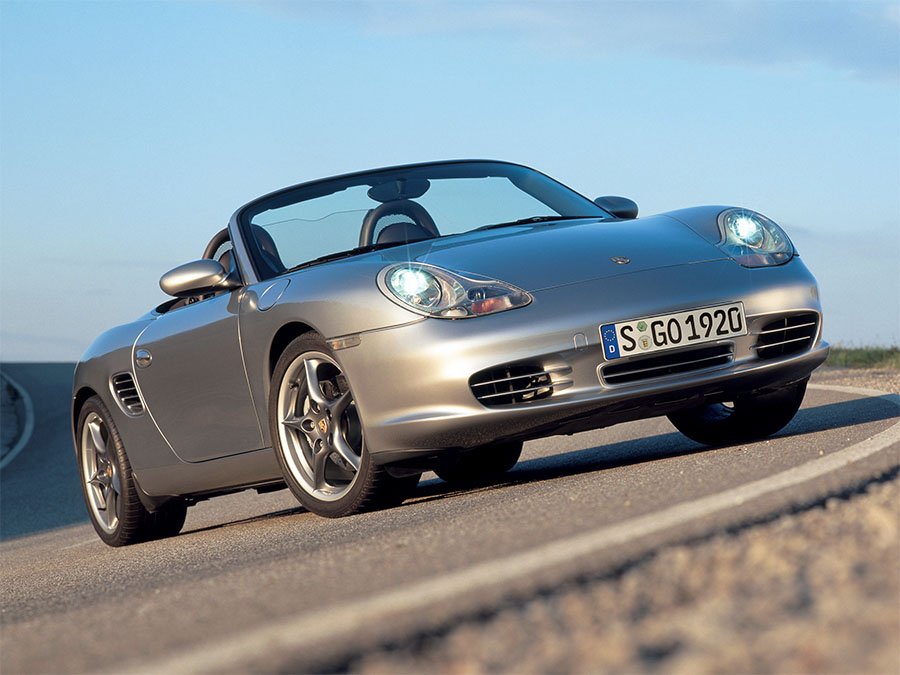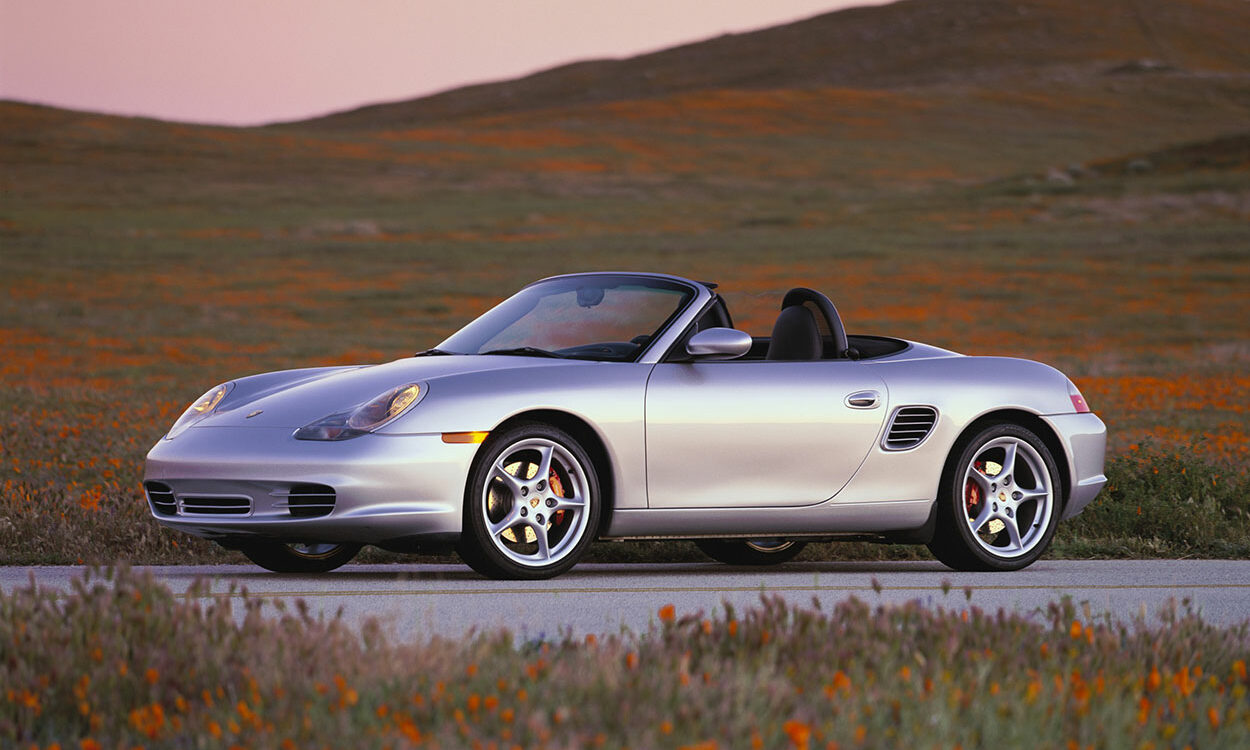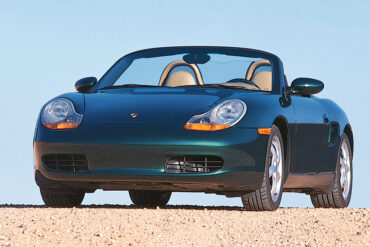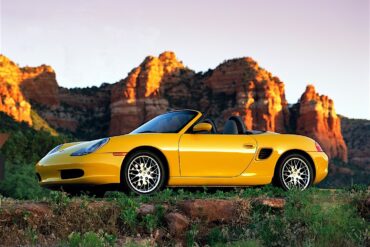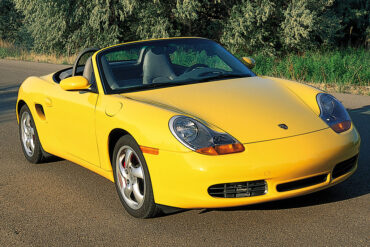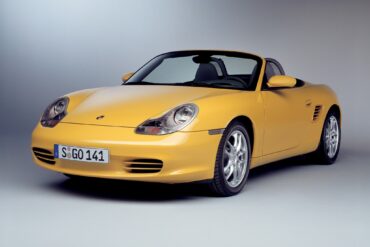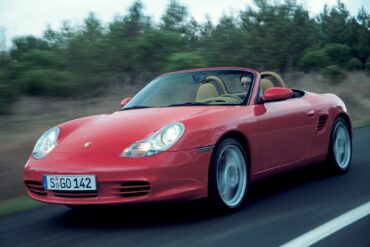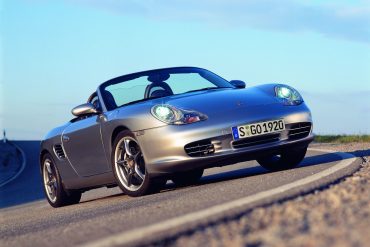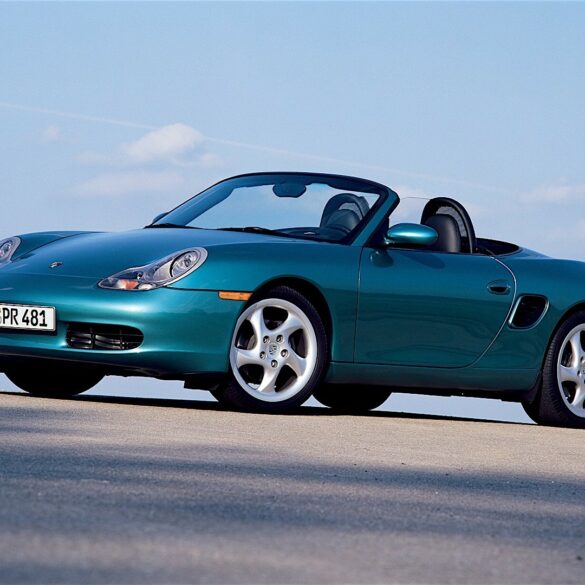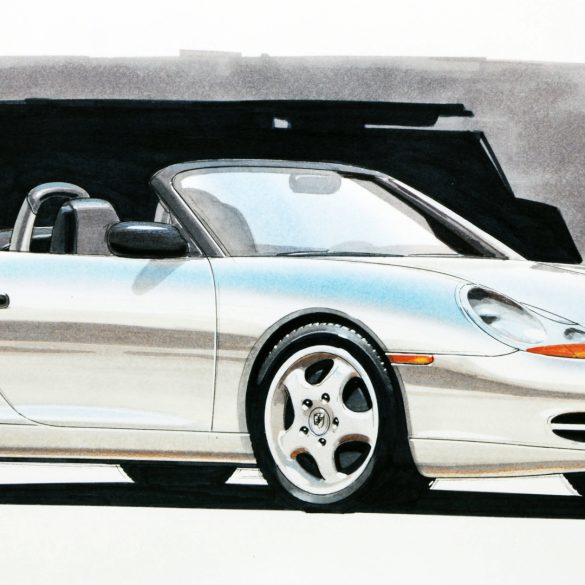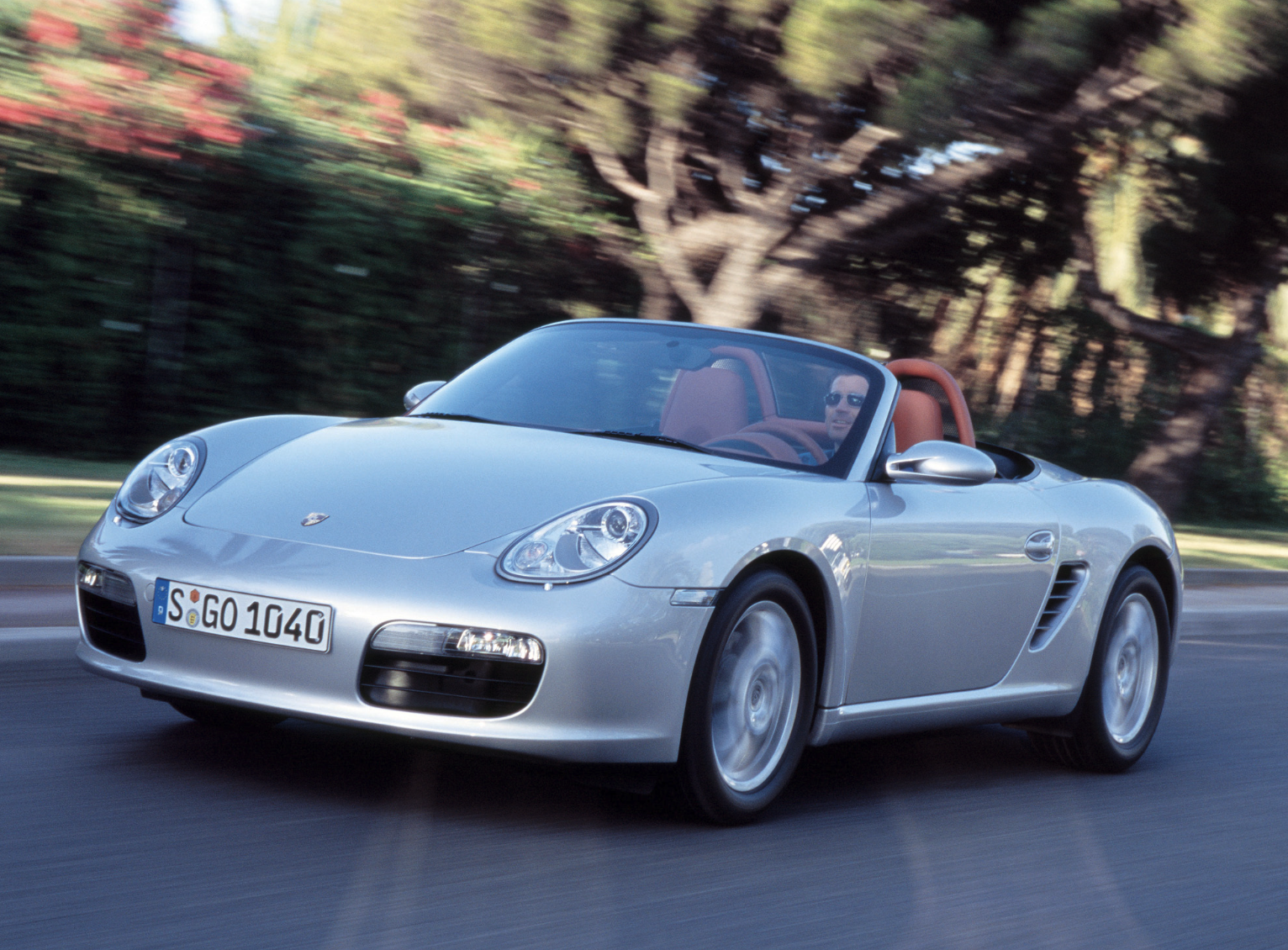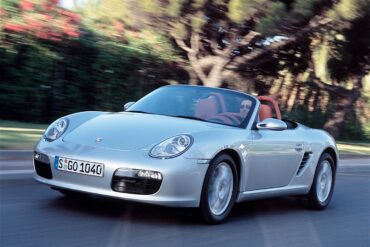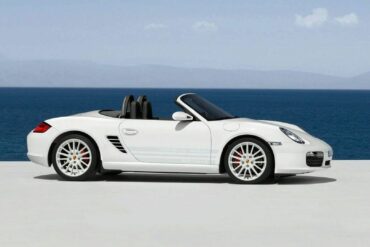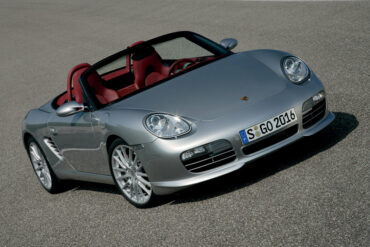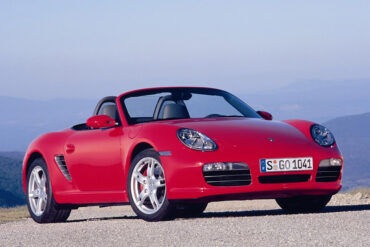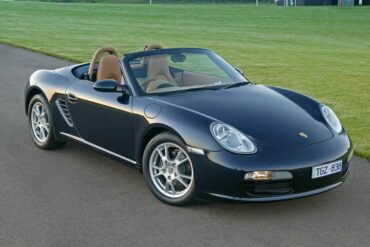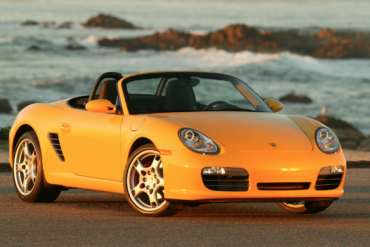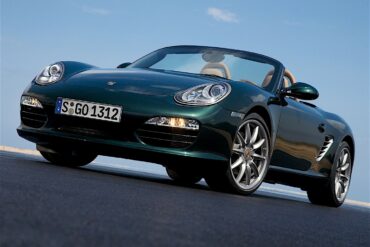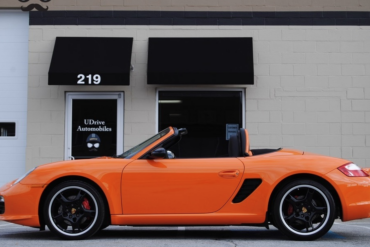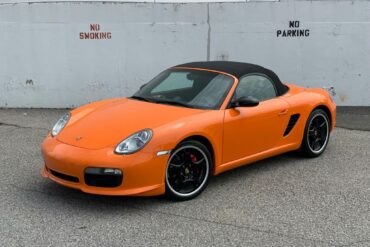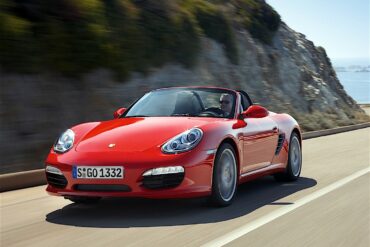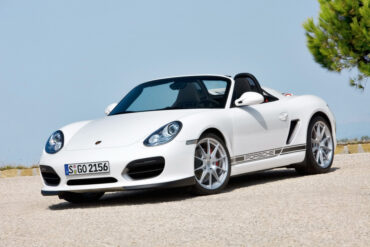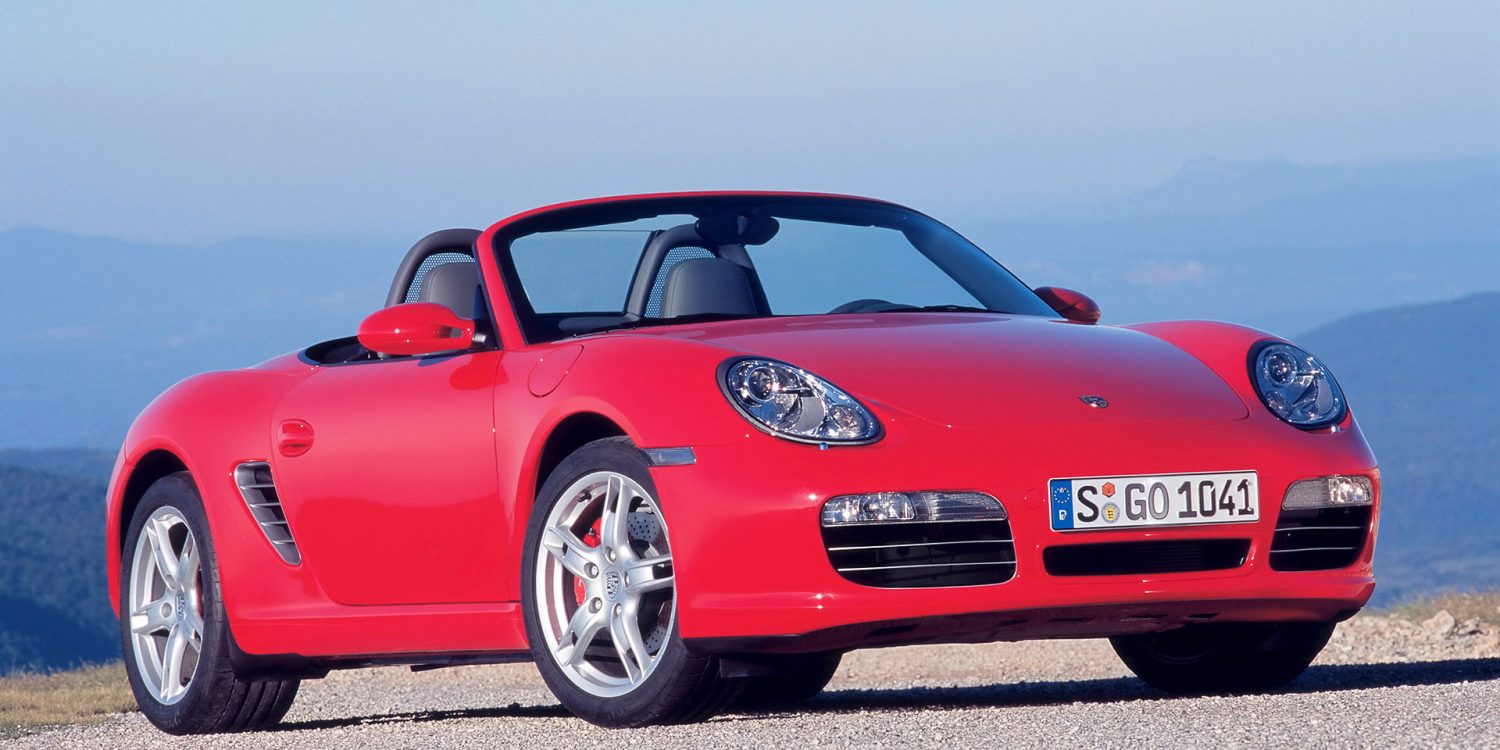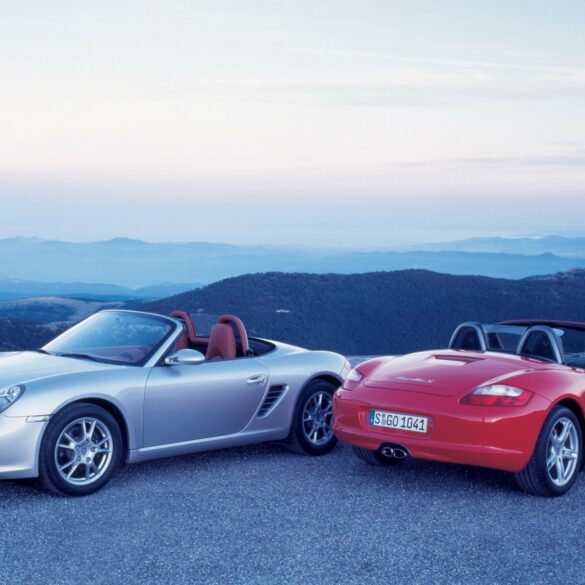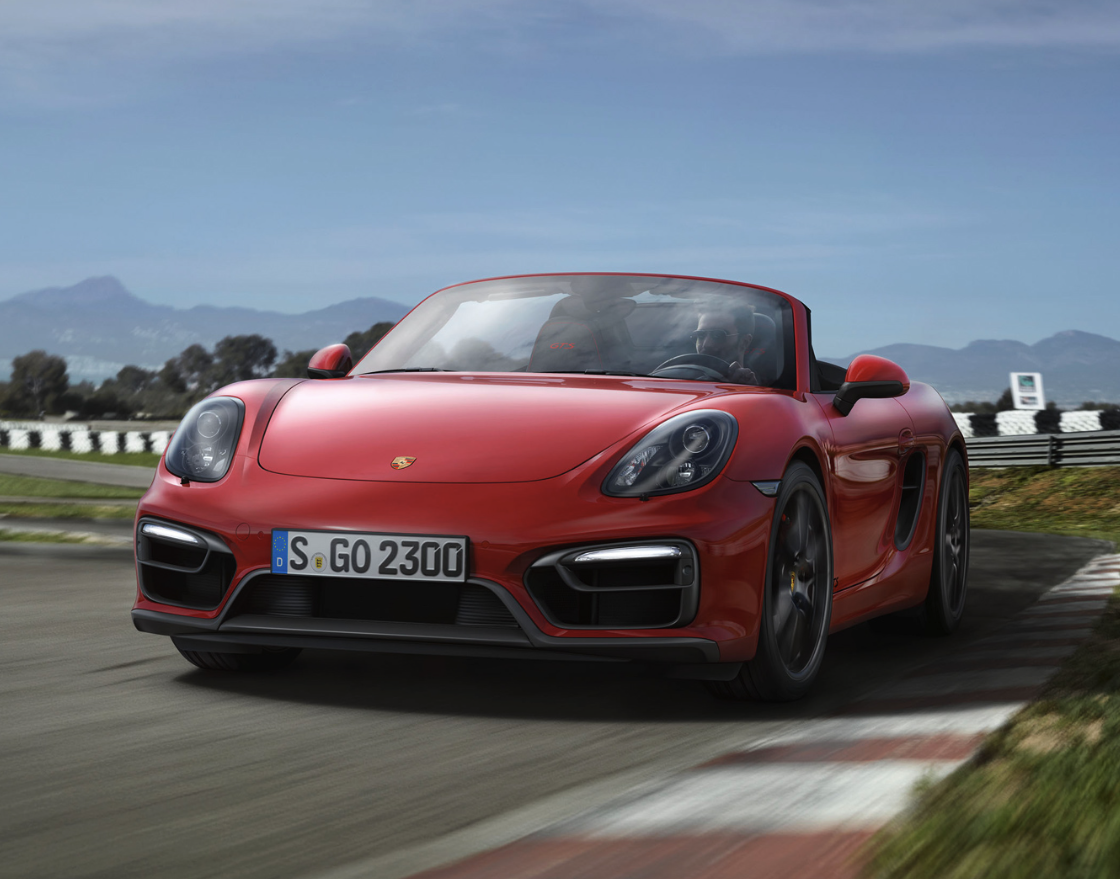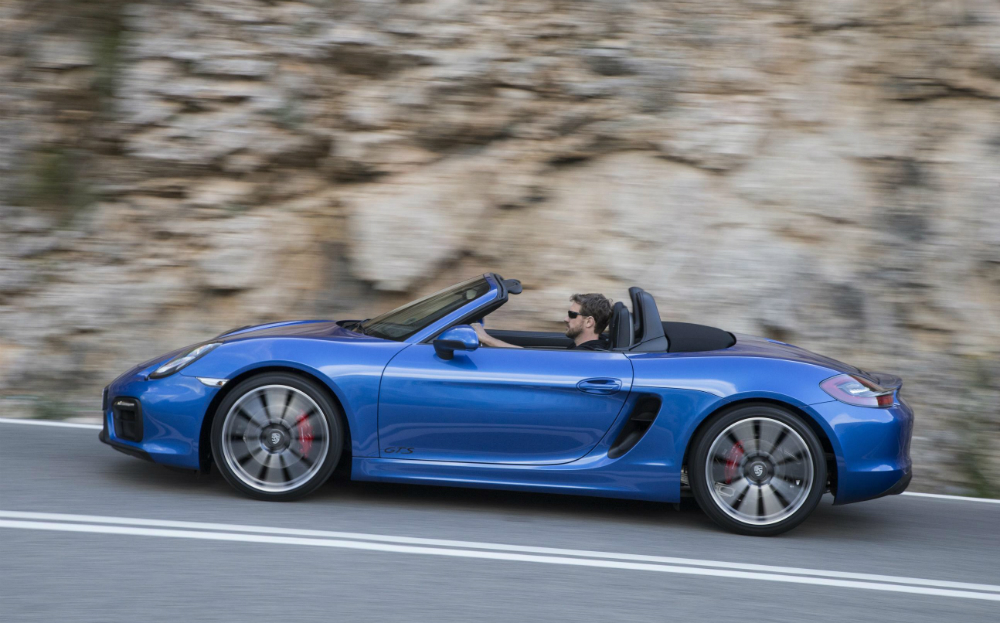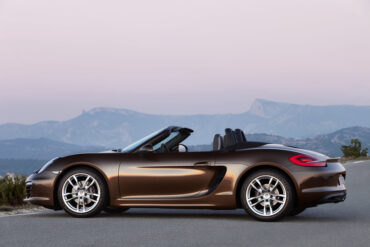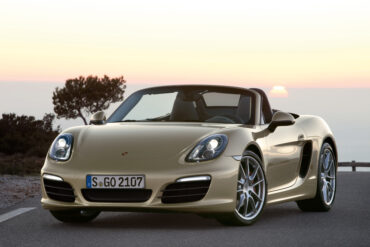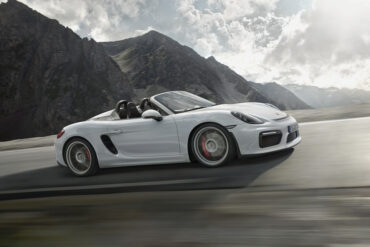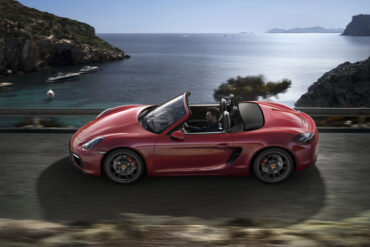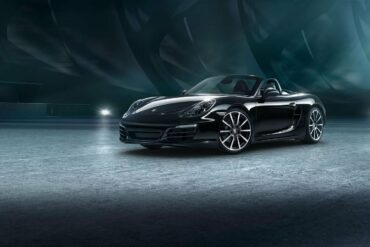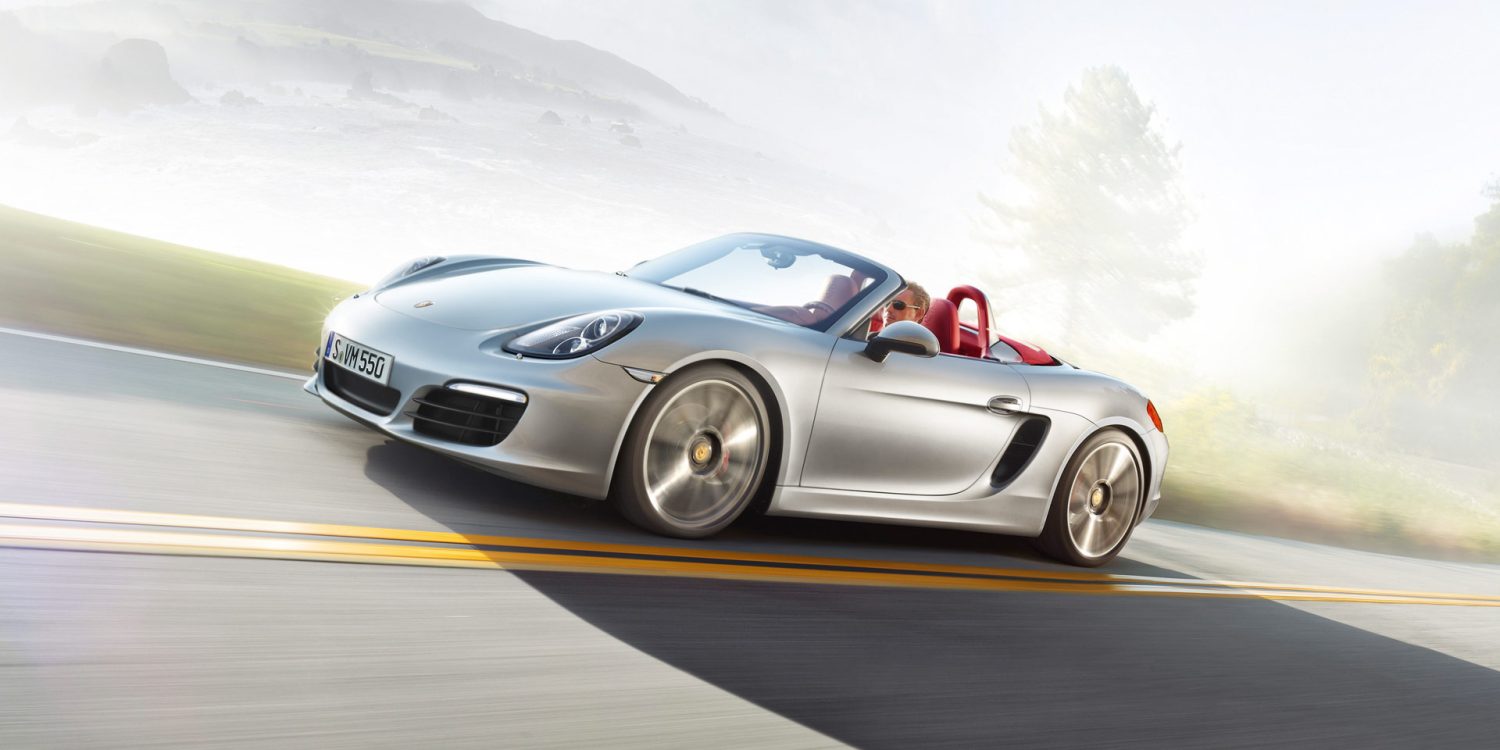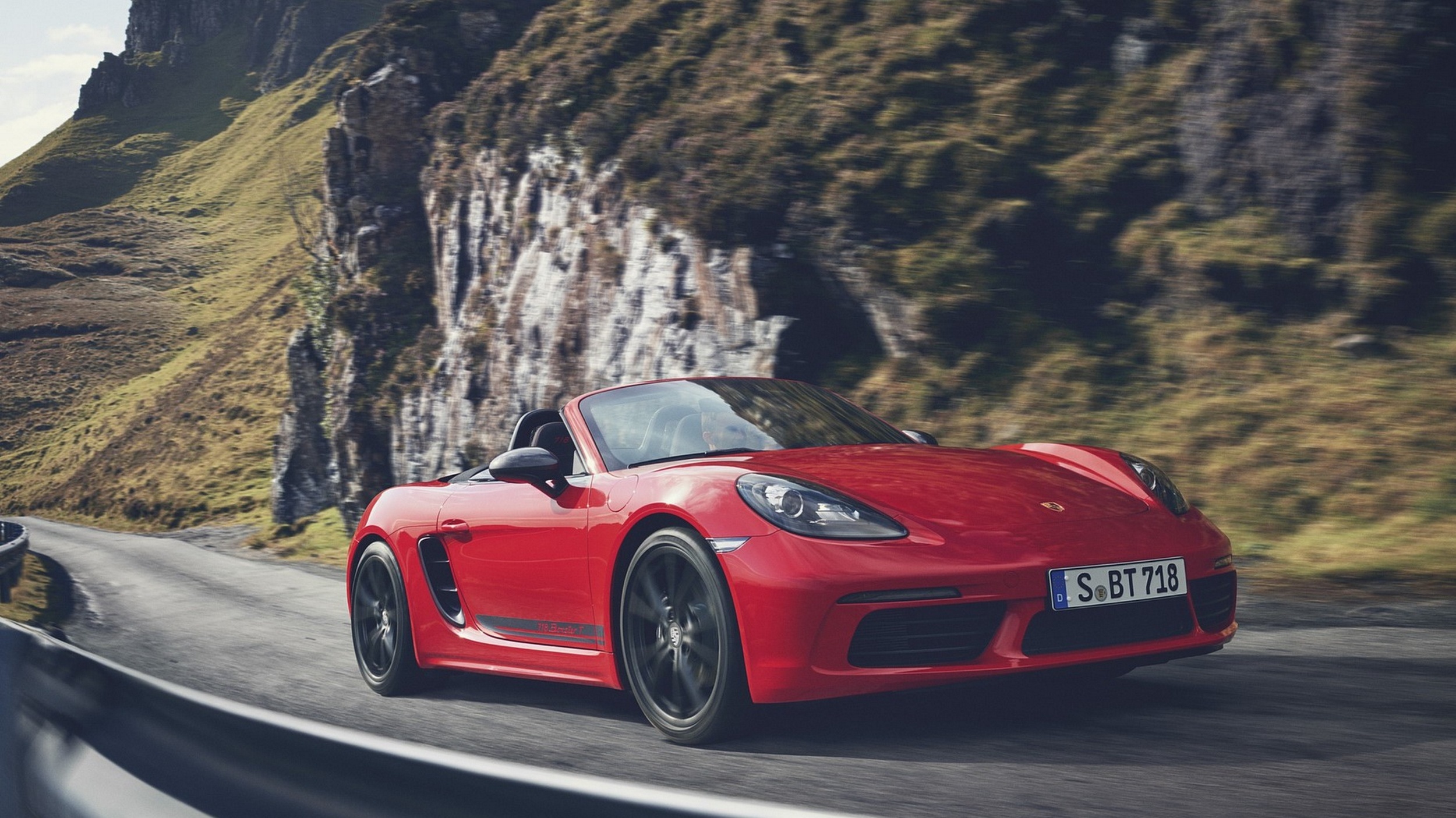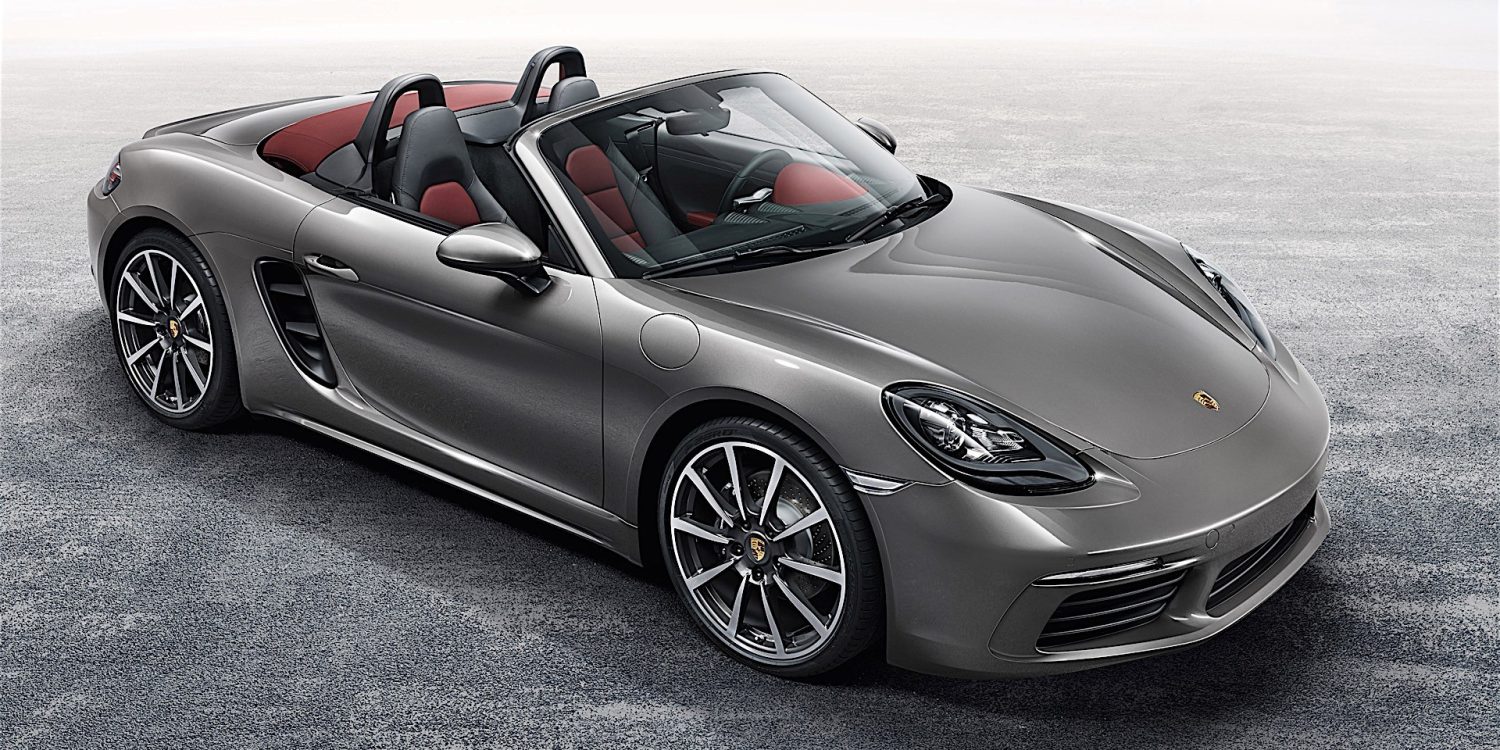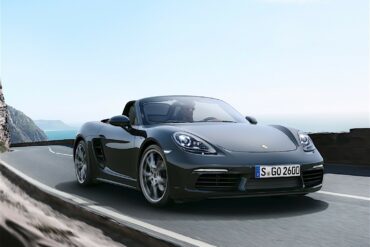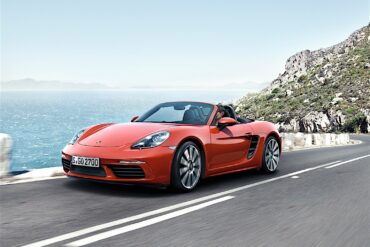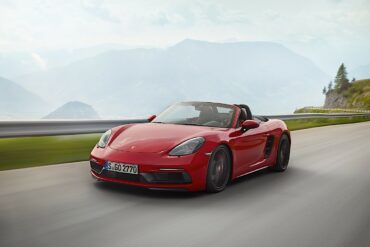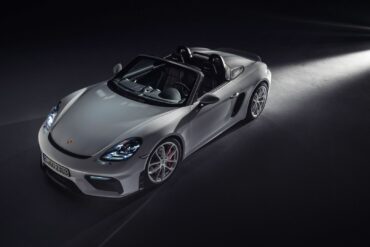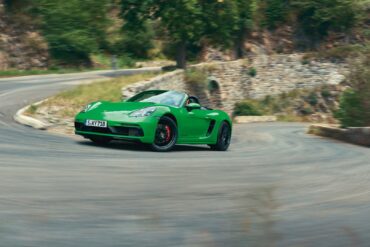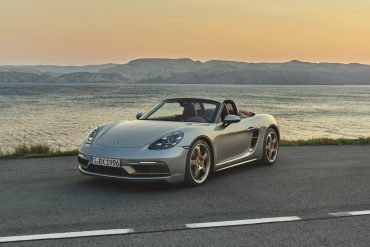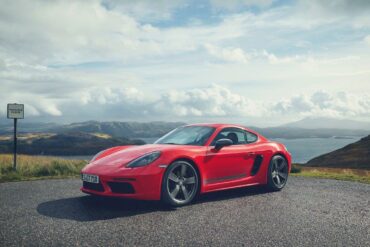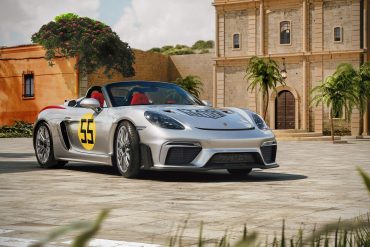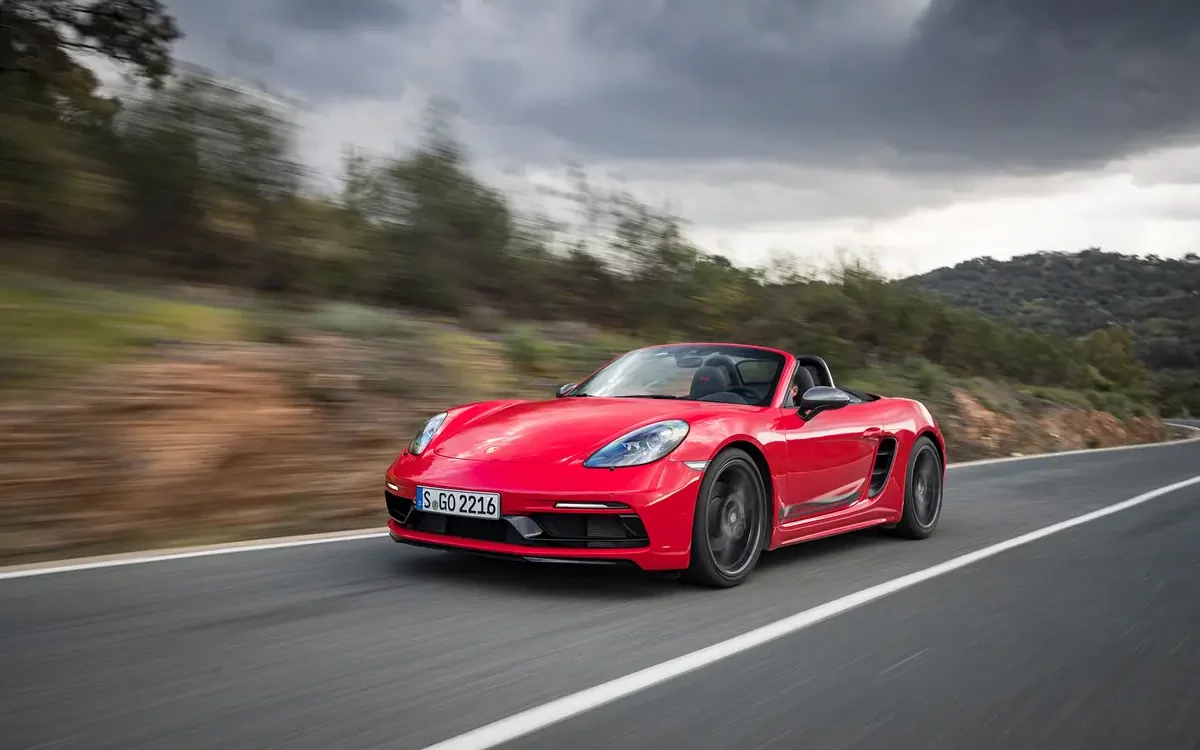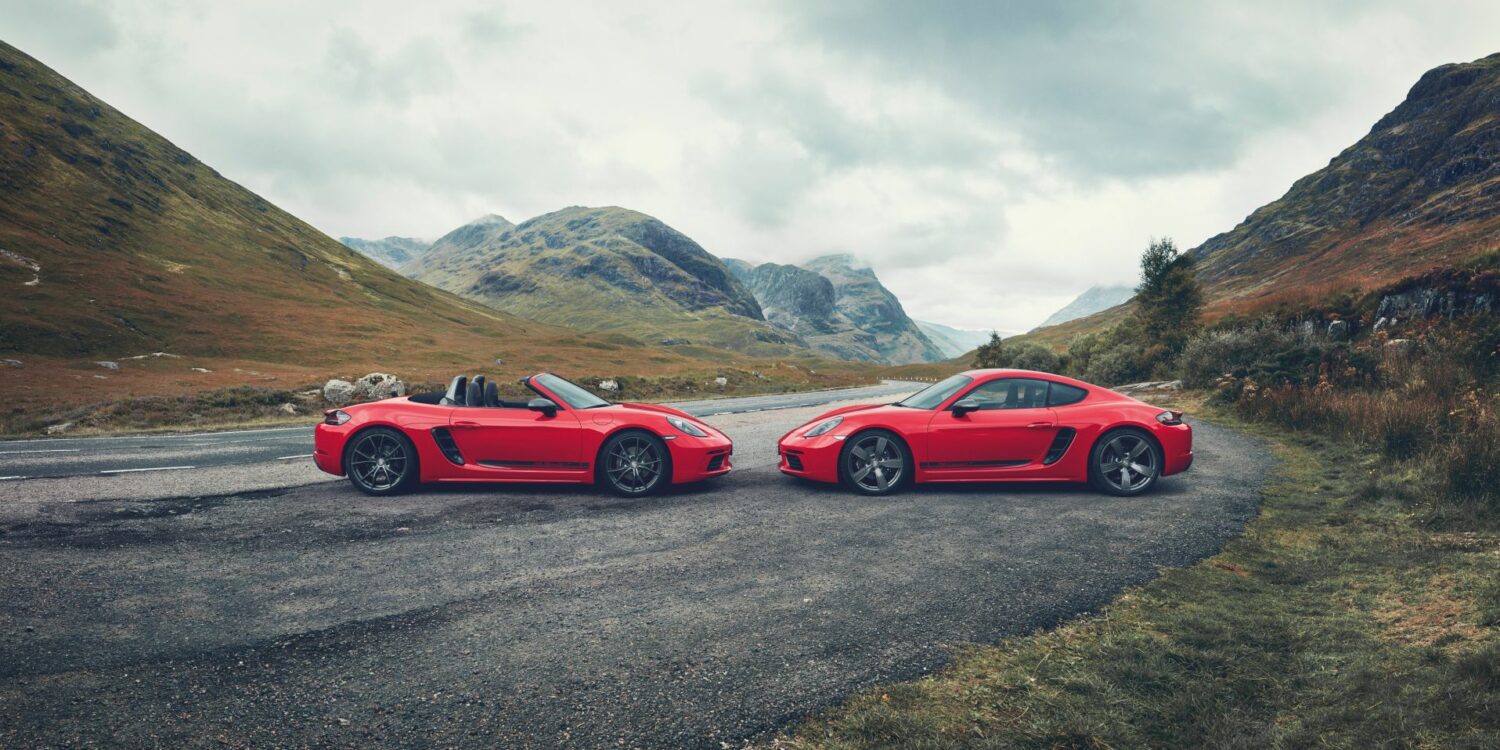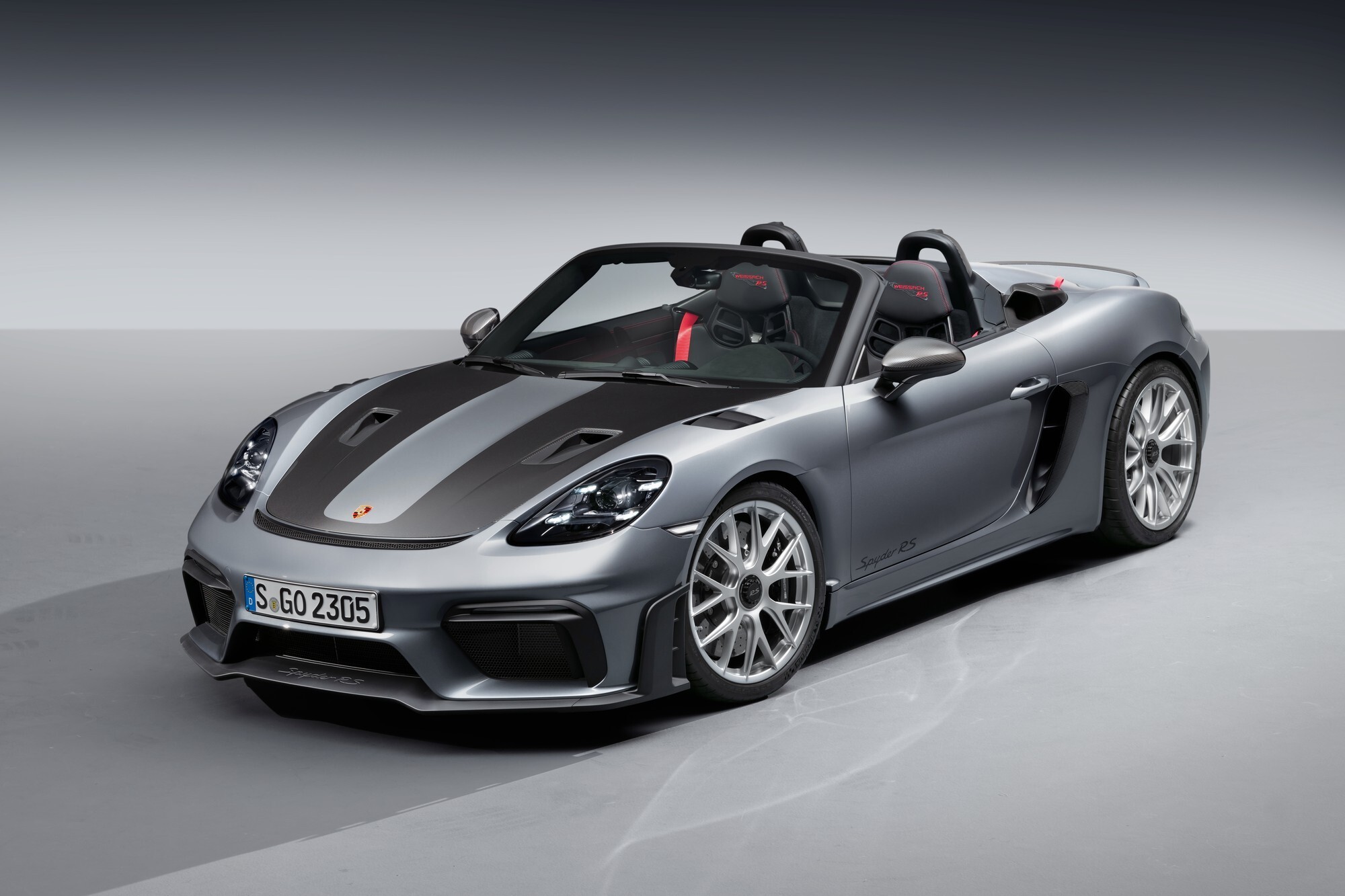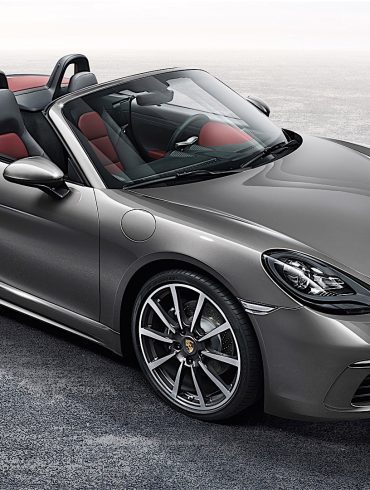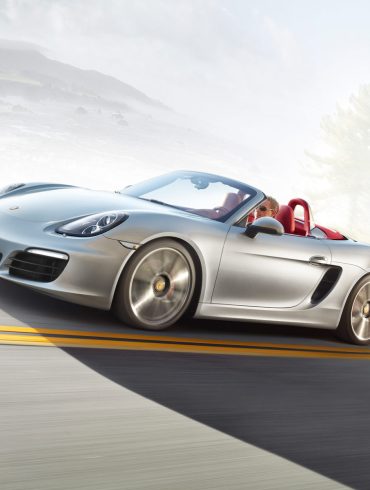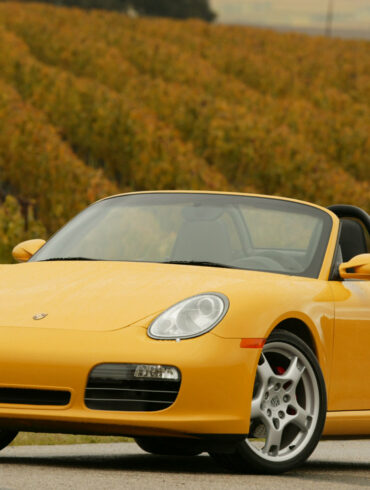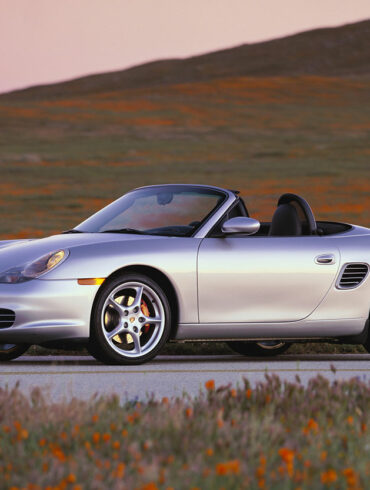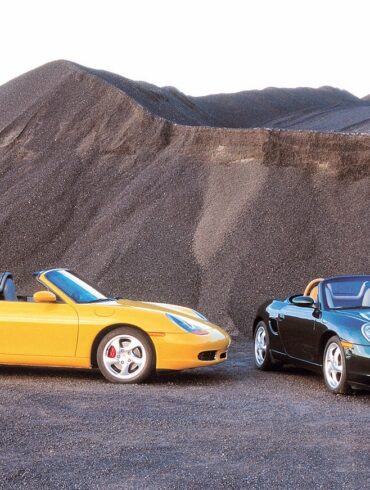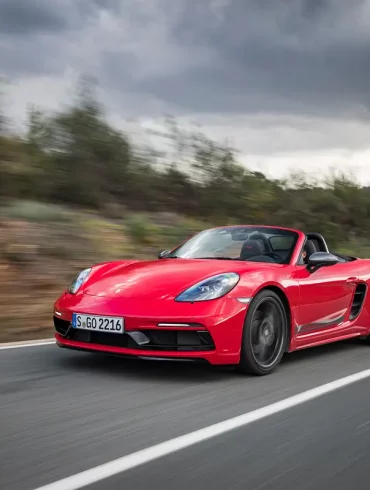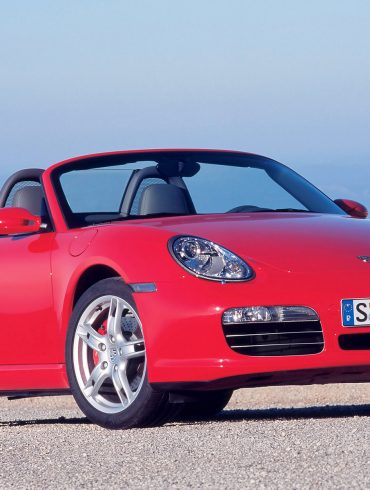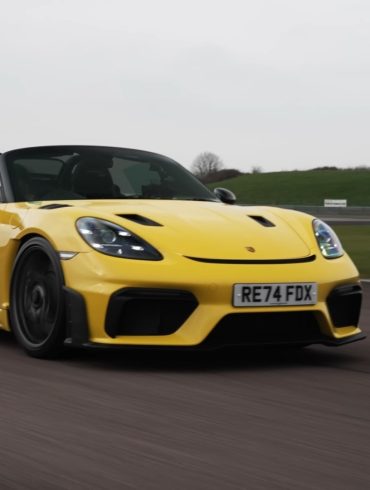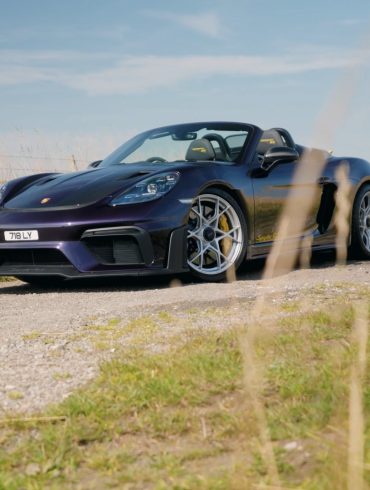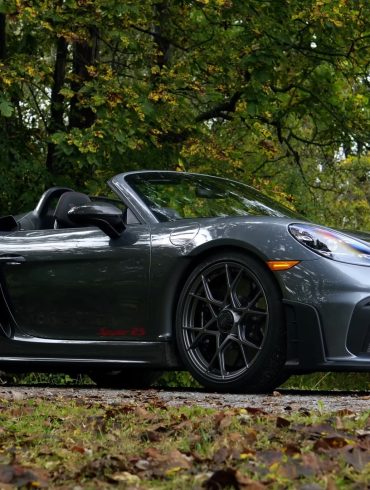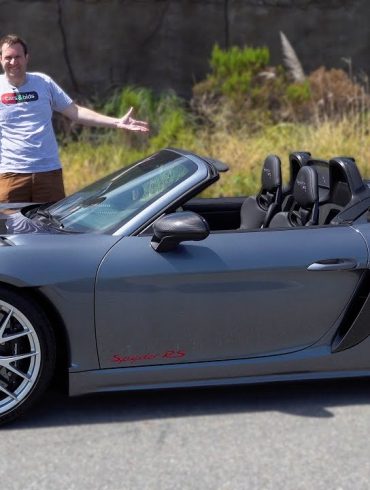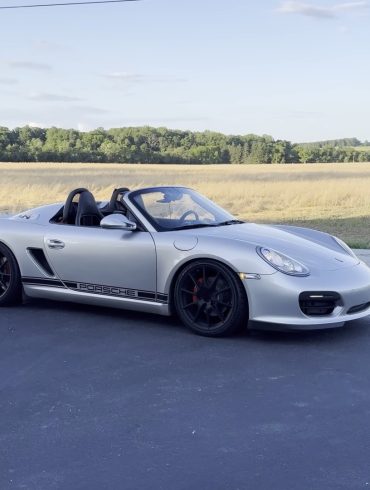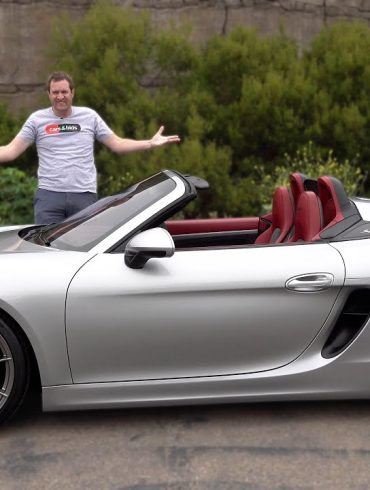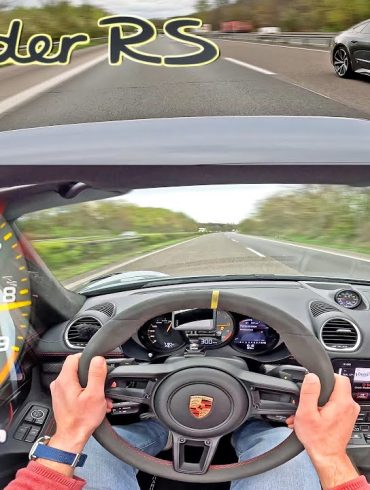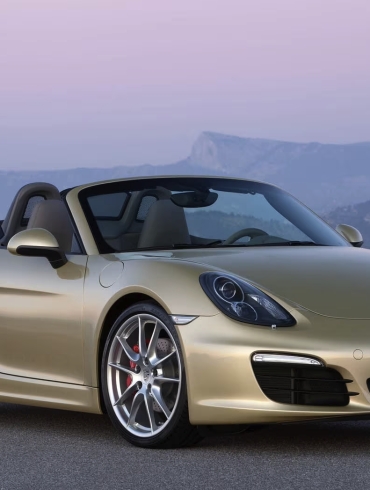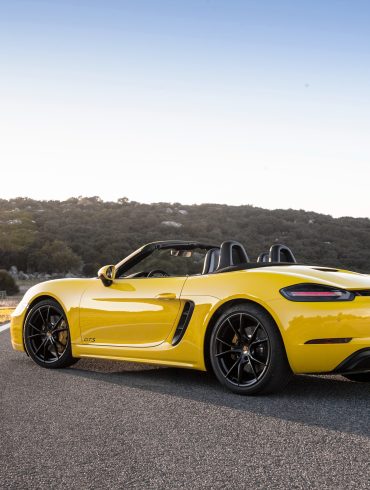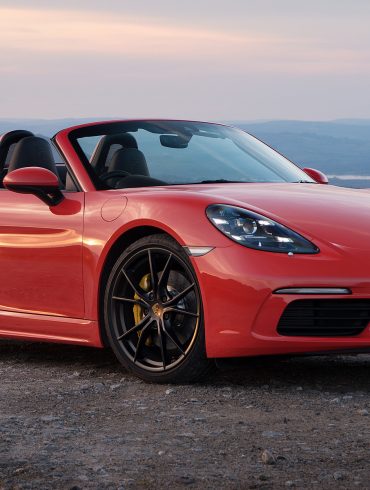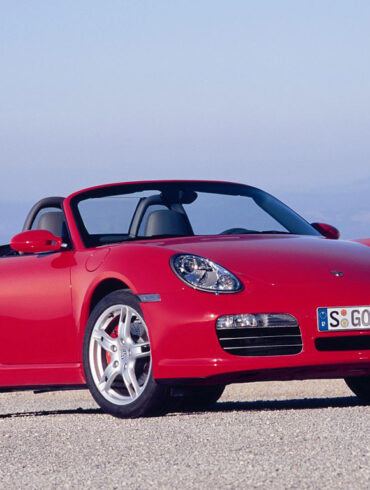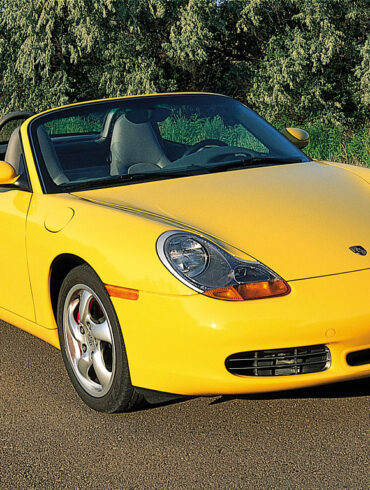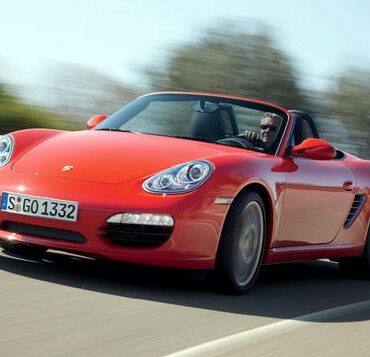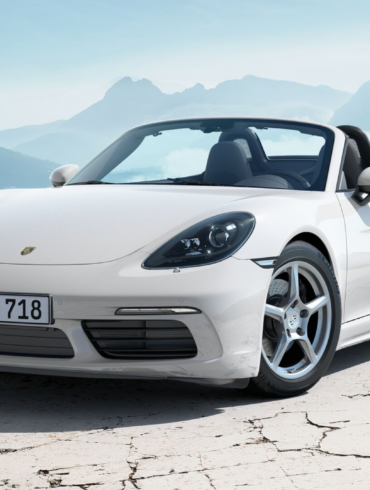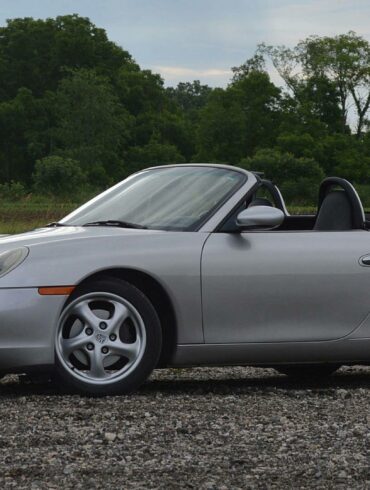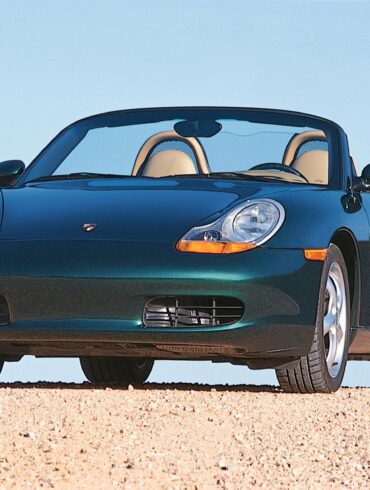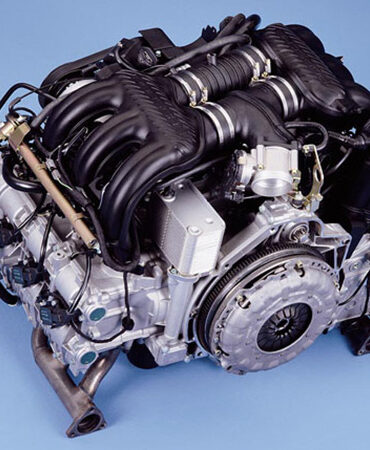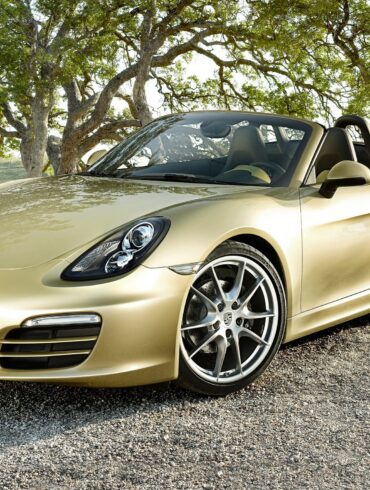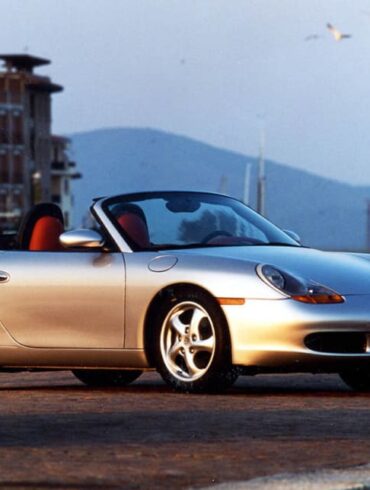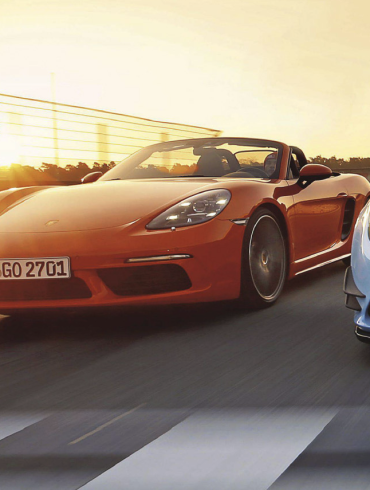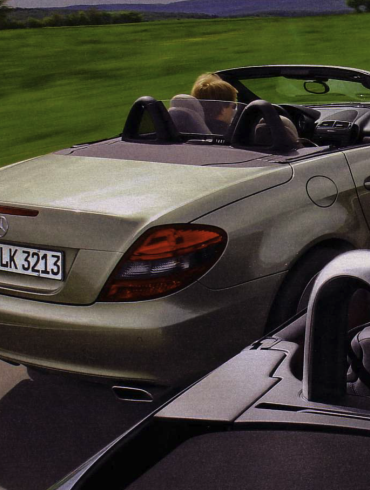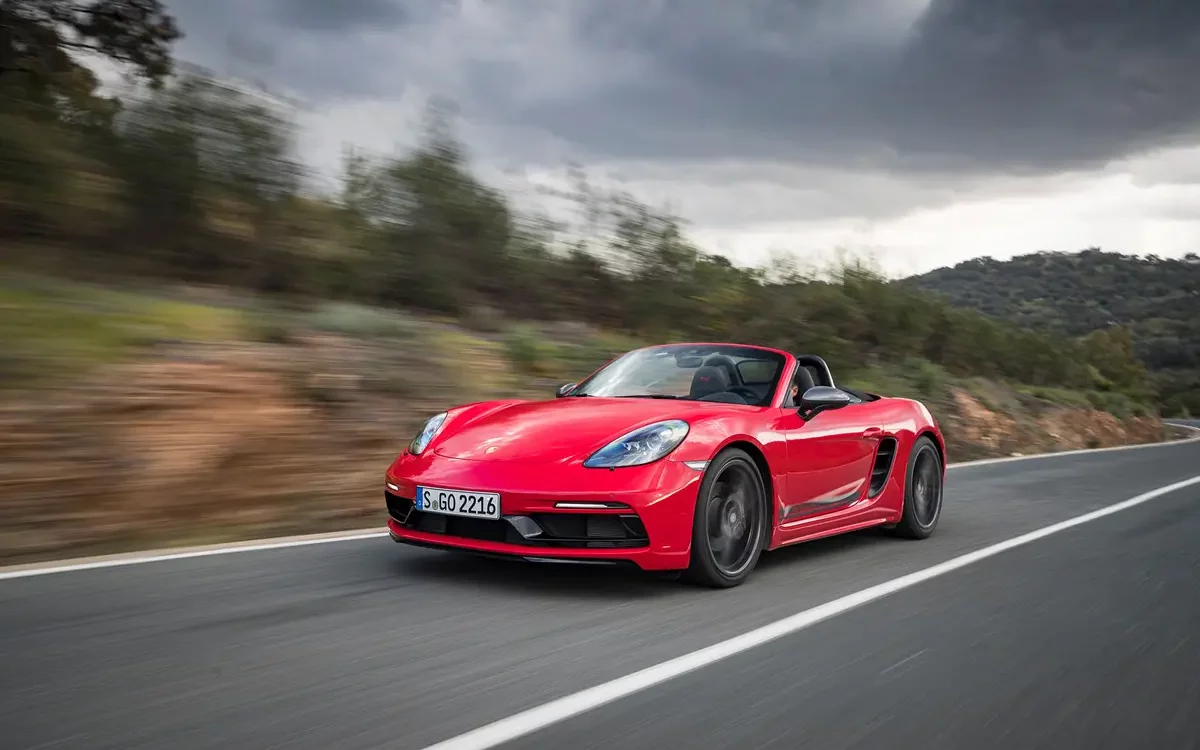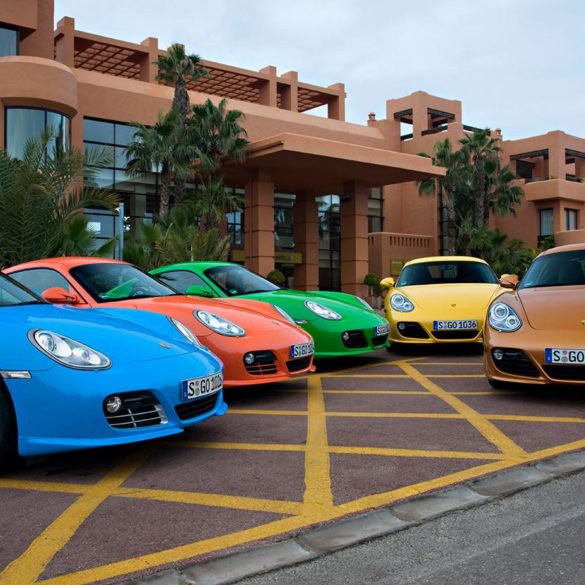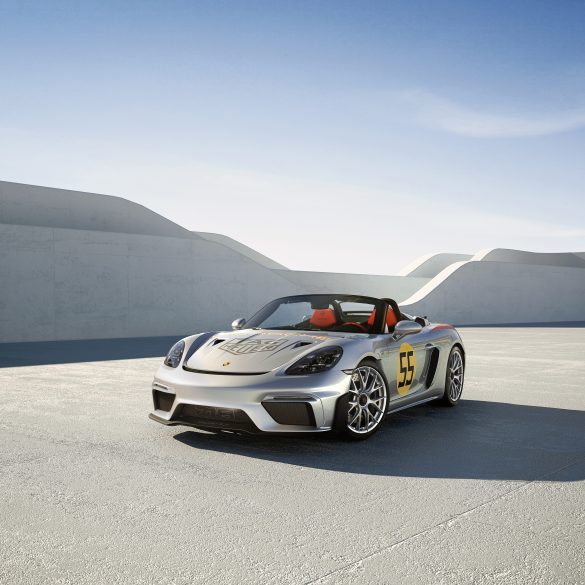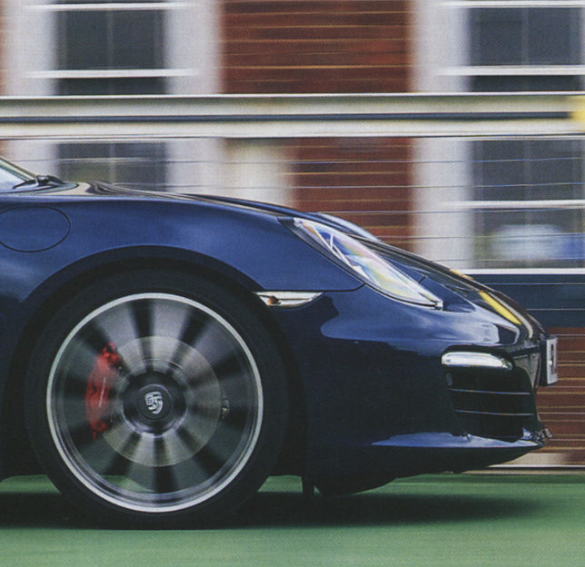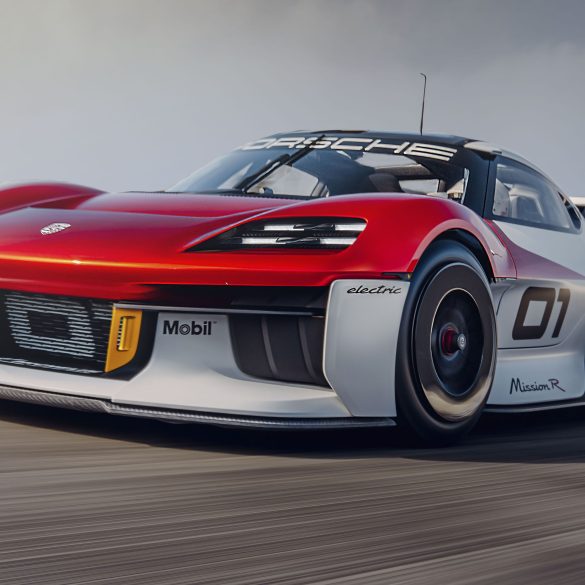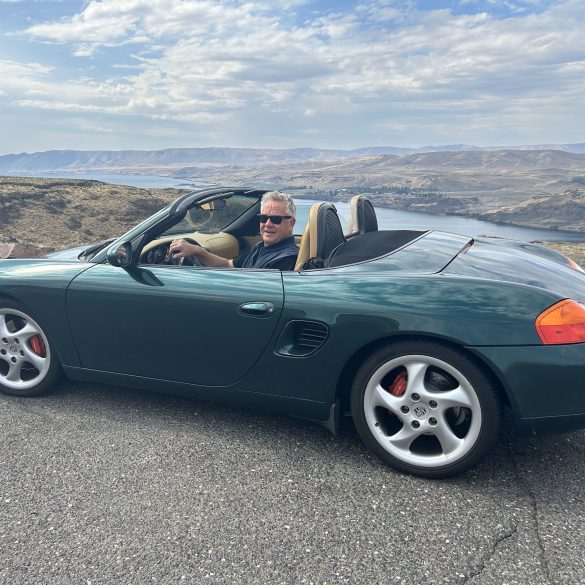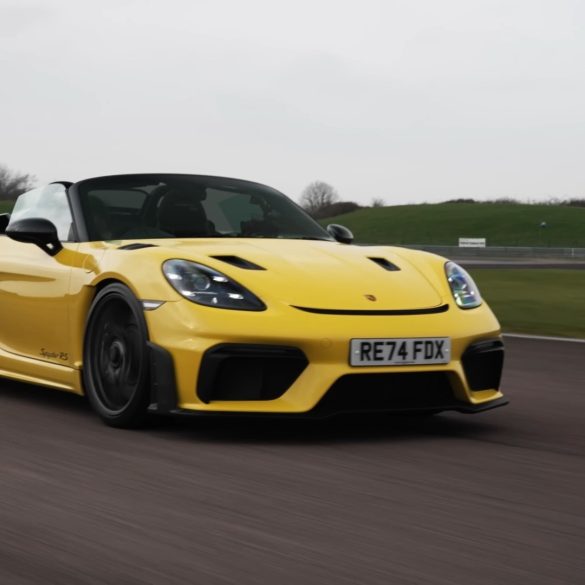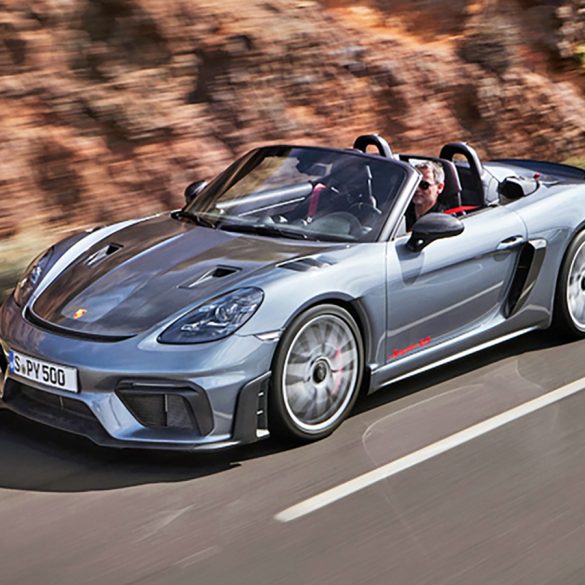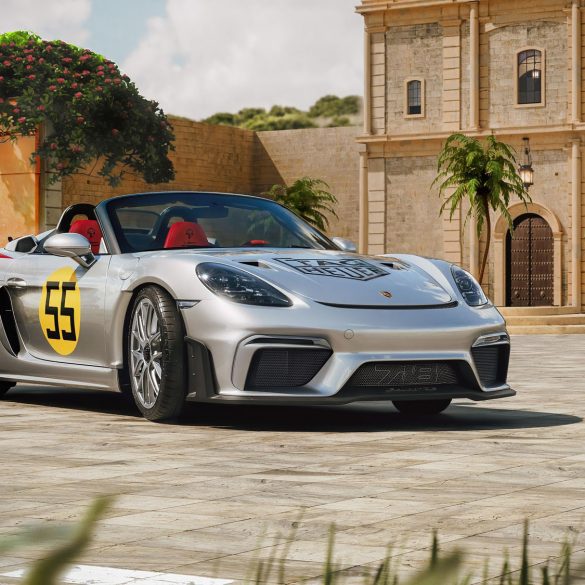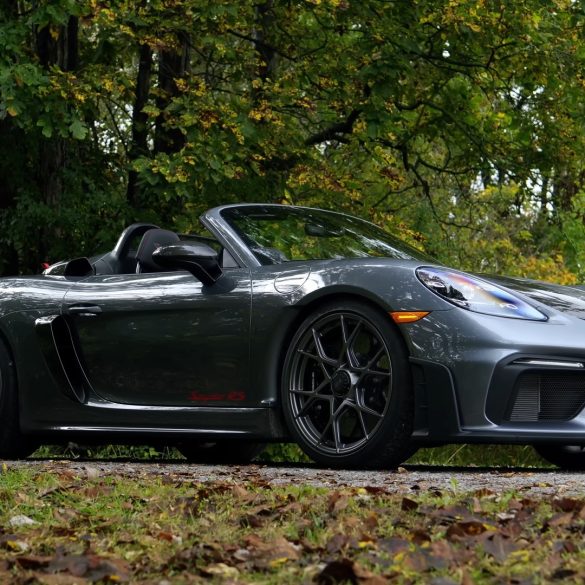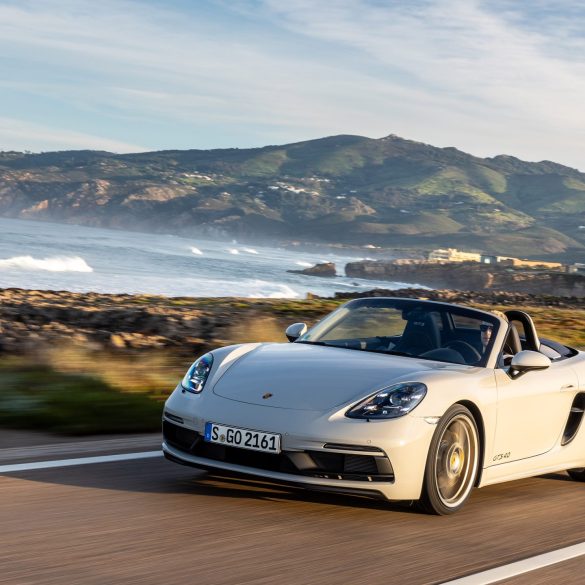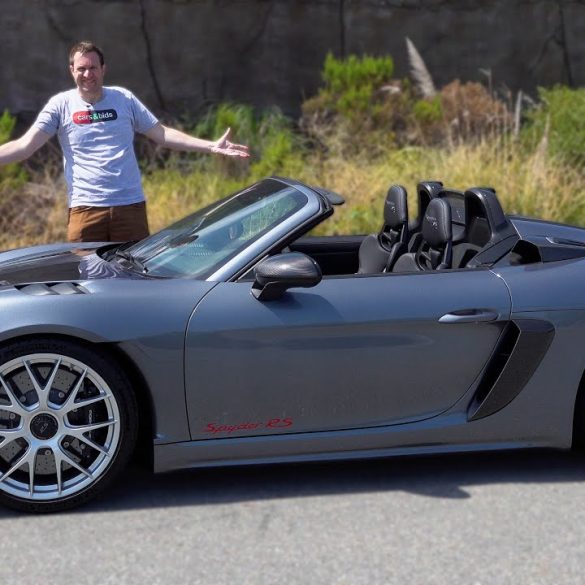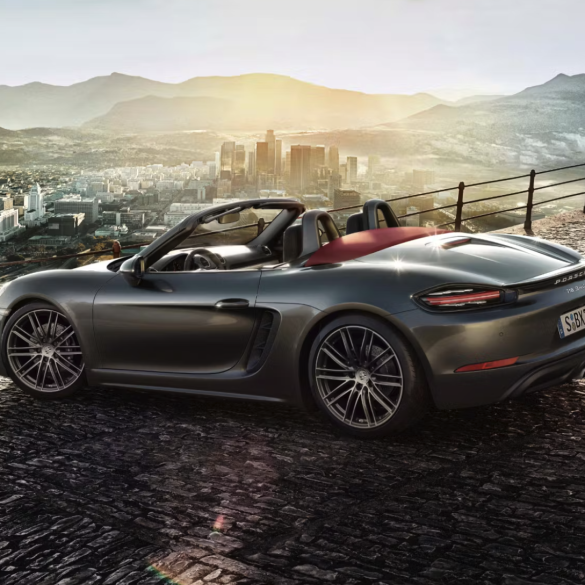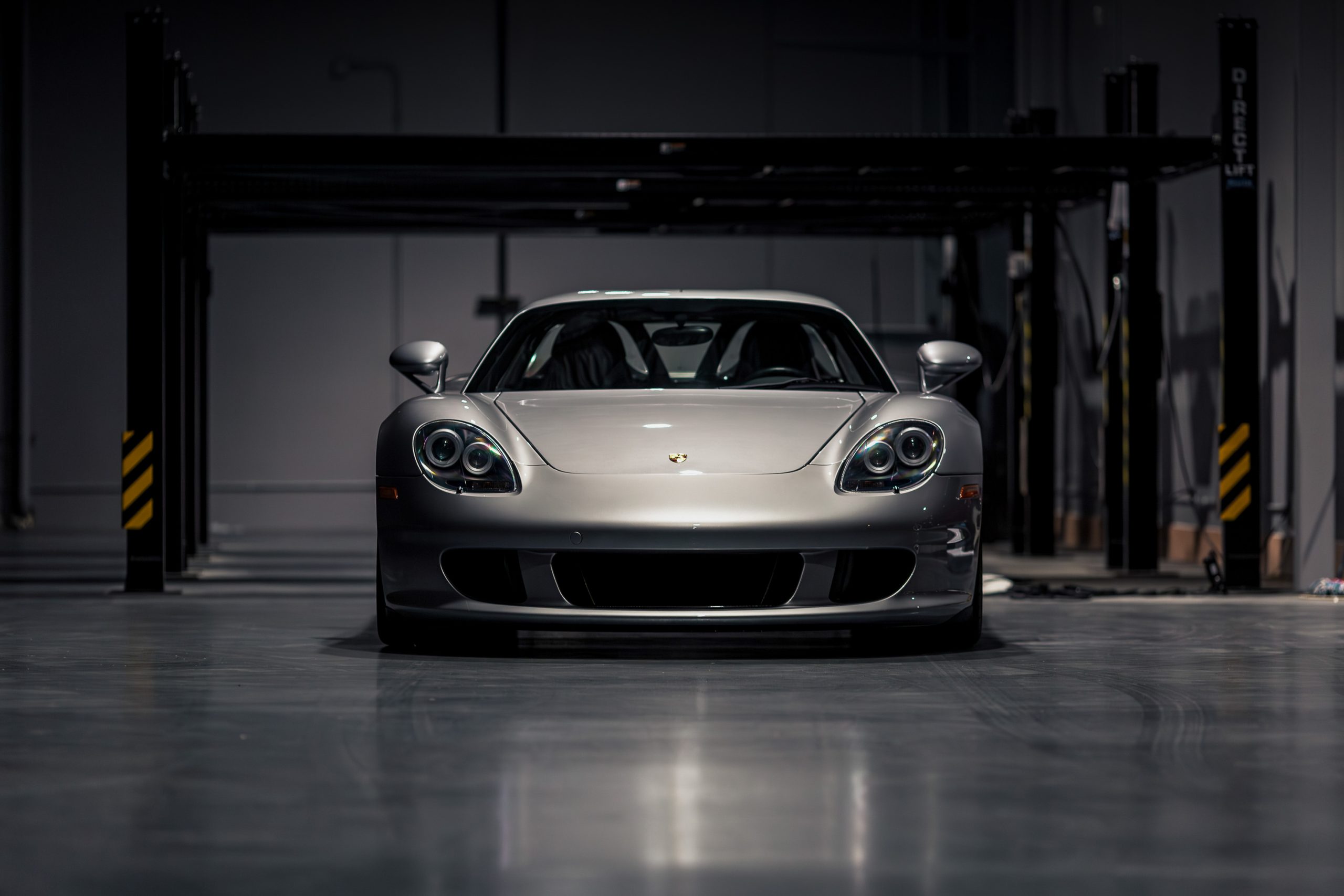Porsche Boxster - The Ultimate Guide
The Sports Car That Saved Porsche. Every Generation. Every Model. Everything You Ever Wanted to Know
Generations Primer / 1st Gen / 2nd Gen / 3rd Gen / 4th Gen / Research / FAQs / Current Lineup / Updates & News
The Porsche Boxster has long stood as a benchmark for balanced, driver-focused performance—offering a pure mid-engine experience that rivals far more expensive sports cars. In this comprehensive guide, we break down every generation of the Boxster, from the groundbreaking 986 that debuted in the late 1990s to the latest 718 Boxster variants, including the GTS 4.0, Spyder, and track-ready Spyder RS. We trace the evolution of the platform, covering technical advancements, design changes, and how each iteration has redefined expectations in its segment.
Each model year brought critical updates, whether it was the improved handling dynamics of the 987, the stiffer and sharper 981 chassis, or the turbocharged shift in the 982 generation. We go in-depth on engine specs, transmission options, performance figures, and trim-level differences—whether you're researching a first-gen S, comparing GTS variants, or deciding between a base 718 and its naturally aspirated 4.0-liter siblings. Special models like the Boxster Spyder and Boxster 25 Years edition are covered in full, with details on what sets them apart and why they matter.
Beyond model breakdowns, we also tackle the realities of ownership. You’ll find expert insights on maintenance, reliability issues, cost of ownership, and which years or variants offer the best value today—whether you're eyeing a project car or a weekend canyon carver. If you're considering buying, owning, or simply learning everything about the Porsche Boxster, this guide is built to be the definitive resource.
No matter where you fall in the enthusiast spectrum—longtime Porsche fan or first-time buyer—this is the ultimate reference for one of the most important sports cars Porsche has ever built.
The Latest Boxster Developments
The era of the internal combustion engine (ICE) Porsche Boxster is drawing to a close. Porsche has officially confirmed that production of the current gasoline-powered 718 Boxster (and its Cayman coupe sibling) is scheduled to cease by October 2025. While a very limited number of units might trickle into showrooms in early 2026, especially in North America, for all intents and purposes, the existing model is on its way out. This discontinuation in most markets follows its earlier retirement from Europe in mid-2024 due to new cybersecurity regulations.
Looking ahead, the Boxster is indeed transitioning to an all-electric future. Porsche has been openly developing fully electric versions of the 718 Boxster and Cayman, which will be built on the new Premium Platform Electric (PPE) architecture, also underpinning models like the Macan EV. The goal is to retain the quintessential Boxster driving dynamics and performance, but with an electric powertrain. Expect options for both rear-wheel drive and more potent all-wheel drive configurations, along with strong horsepower figures that will likely surpass the current base models.
However, the journey to electrification for the Boxster hasn't been without its bumps. The launch of the all-electric Boxster and Cayman has been officially delayed, now expected no sooner than 2027. This postponement is largely due to technical hurdles in battery development and supply chain issues, including the bankruptcy of a key battery manufacturer. Porsche is committed to delivering an electric sports car that lives up to its heritage, and these delays suggest they are taking the necessary time to ensure the electric Boxster meets their rigorous performance and quality standards.
Porsche Boxster Generations
A Primer
1st Generation Boxster (986)
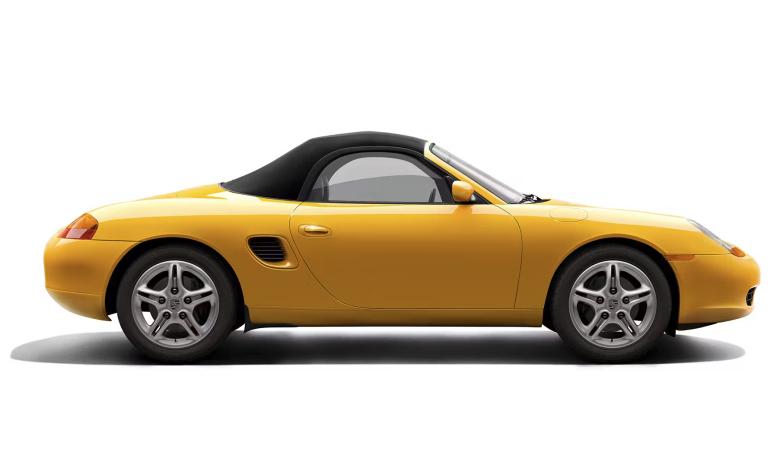
The Boxster was initially unveiled as a concept in 1993 at the Detroit Auto Show, before going on sale in the summer of 1996 (as a 1996 model year in the United States). The first 986-generation Boxster had a mid-mounted 2.5-liter naturally aspirated flat-six that was good for 201 horsepower and 181 lb-ft of torque. It had a five-speed manual transmission or an optional five-speed Tiptronic automatic. The car received a significant update in 1999 for the 2000 model year, with a bigger base engine, tuned intake runners, and a more powerful S model.
Following customer feedback, the base 2.5-liter flat-six was enlarged to 2.7 liters, resulting in an increase of 16 horsepower and 11 lb-ft of torque. The S model got a 3.2-liter naturally aspirated flat-six making 250 horsepower and 225 lb-ft of torque, as well as a six-speed manual gearbox, bigger cross-drilled brakes from the 996, Carrera wheels, upgraded suspension components, a third radiator up front, and a dual-exit exhaust. It has a higher 7200-rpm redline, and was able to sprint to 60 mph in 5.2 seconds when new. The 986 received yet another refresh from Porsche in 2003. Output from the base 2.7-liter car grew to 225 horsepower, while torque remained the same at 192 lb-ft.
For the 986’s final model year, 2004, Porsche introduced the 550 Spyder 50th Anniversary edition Boxster, based on the S model, it was the most powerful first-gen Boxster produced, it made 264 horsepower from its 3.2-liter flat-six.
2nd Generation Boxster (987)
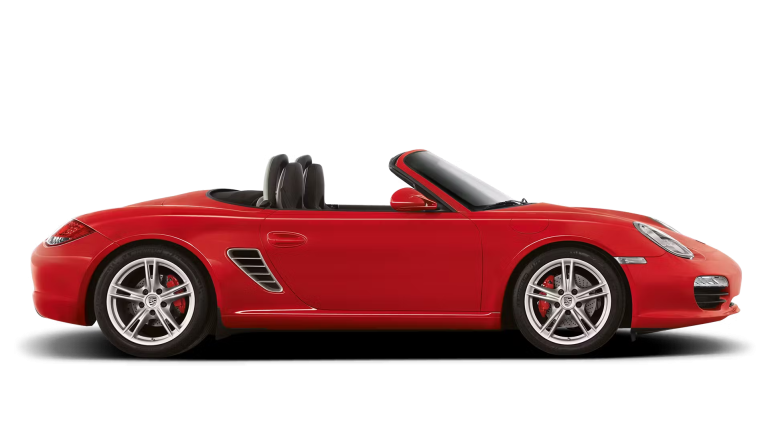
The second generation Porsche Boxster came out in 2004 at the Geneva Motor Show and shared almost the same design with the first version of the car. It also shared a lot of components with its 997 generation 911 sibling which was released the same year. The second generation Boxster was known as the 987.
Design wise, the second generation Boxster had distinctive front styling with different triangular headlights and a unique front fascia. The front air intakes got redesigned, as well as the rear bumper and stoplights. The 987 Boxster's base 2.7-liter engine and 3.2 Boxster S were largely carried over from the late 986, but a 12 lb weight savings was realized by eliminating the cast-iron bearing girdle inserts.
During the 2006 model year, Porsche incorporated a larger ball bearing for the support of the intermediate shaft at the flywheel end, which mostly mitigated the infamous intermediate shaft (IMS) bearing issues that plagued the M96 series. The 2007 Boxster received engine updates to match those of its hardtop Cayman stablemate. This consisted of the VarioCam Plus two-stage intake valve lift to both the base and S versions. The base five-speed manual was no longer Audi-based but made by Japanese supplier Aisin; the Boxster S six-speed retained the Getrag unit. Porsche introduced the face-lifted 987 for the 2009 model year. The updated Boxster featured a family of all-new engines with new designation and direct fuel injection (DFI) for the 3.4-liter S versions of the 987.2 and for all 997.2s; the base model 2.9-liter 987.2 had port fuel injection.
The other major change for the 987.2 was the replacement of the optional torque converter-equipped Tiptronic automatic transaxle with a dual-clutch automated transaxle that Porsche dubbed PDK.
3rd Generation Boxster (981)
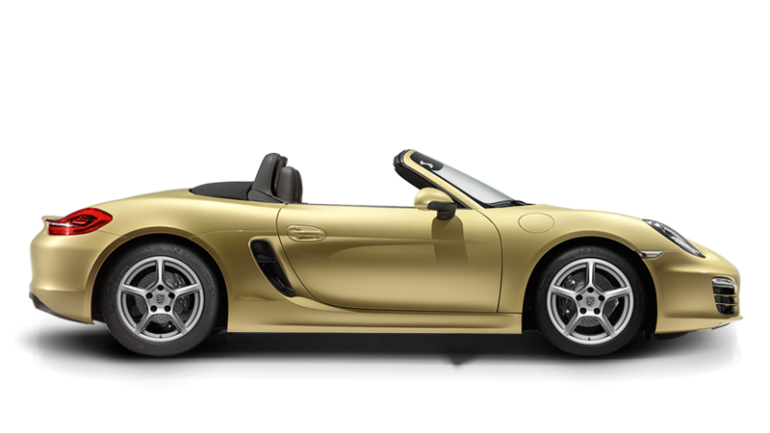
The third generation of Boxster was the 981 generation and frankly it is our favorite here at Stuttcars. Changes includes a body shell that was 17 percent lighter than that of the 987 thanks to an increased usage of aluminum construction, along with strategic use of high-strength steel in key areas. This kept the curb weight to around 3,000 lbs, despite being a larger car than its predecessor.
The 981 Boxster was powered by the MA1-series flat-six, with the base engine's displacement reduced by 200cc to 2.7 liters, but this was more than made up for by replacing the base 987.2's port fuel injection system with DFI. The optional "Sport Chrono" package added dynamic transmission mounts, which functioned similarly to the optional magnetorheological mounts used on the engine side of the rear-engined 991.
The 981's chassis and suspension were similar to the 991 Porsche 911, with a 60 mm longer wheelbase and increased front track by 36-48 mm depending on front wheel offset. The front suspension geometry was revised to increase its resistance to braking dive, and the rear suspension had much greater resistance to dynamic toe changes than did that of the 987.
4th Generation 718 Boxster (982)
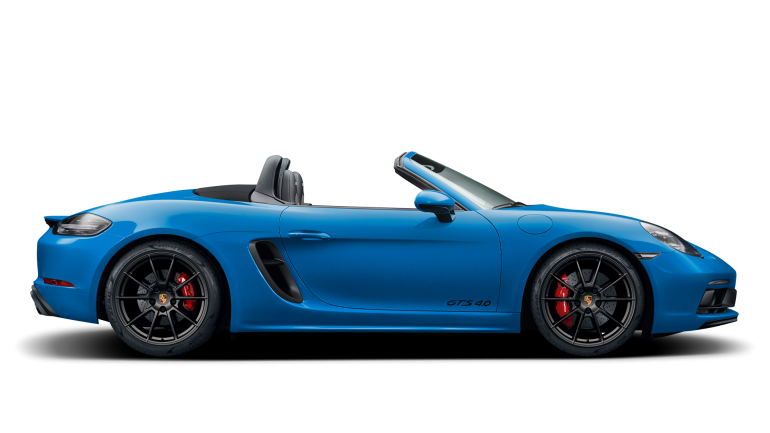
Ever-stringent government fuel economy and CO2 emissions standards forced Porsche to downsize and turbocharge its entire range of engines. This meant that the marketing department leaned on the flat-four heritage of the 550 Spyder and 718 race cars, dubbing the internally-designated 982 Boxster and Cayman models as the 718.
The MA2-based flat-fours of the base and S versions of the Boxster had more varied specifications than any of their predecessors. The 2.0-liter MA2/20 of the base model had a turbocharger with a conventional internal wastegate for boost control, while the 2.5-liter, 350-hp MA2/22 of the Boxster S had a variable turbine geometry turbocharger in addition to a conventional internal wastegate to reduce exhaust backpressure.
Porsche fans who missed the howl of a flat-six in a new mid-engined roadster collectively rejoiced with the introduction of the 2019 Boxster Spyder, which featured an MA2-derived, naturally aspirated 4.0-liter flat-six, which generated 414 hp and revved to 8,000 rpm. This drivetrain reverted to the three-point mounting system of previous six-cylinder Boxsters.
More recently, Porsche added the 4.0 L flat six to the GTS model, so enthusiasts can have their cake and eat it too.
To celebrate 25 years of the Boxster, Porsche announced a limited edition 718 Boxster 25 for the 2022 model year. Restricted to 1,250 units worldwide, the car is based on the GTS 4.0 model which makes it a very interesting proposition for the collector looking for something fun to drive too. The final swangsong for the Boxster is probably the greatest one ever made, the Spyder RS.
Porsche Boxster 986 (1st Generation) Basics
Type: 986 (986.1, 986.2)
Generation: First Generation
Manufacturer: Porsche AG
Production Years: 1996 - 2004
Model Years: 1997 - 2004
Designer: Grant Larson under Harm Lagaay
Body Style: 2-Door Roadster
Layout: Mid-engine, RWD
Engines: 2.5 L Porsche M96.20 flat-6 (1997–1999), 2.7 L M96.22/M96.23 flat-6 (2000–2004), 3.2 L M96.21/M96.24 flat-6 (2000–2004)
Transmission: 5-speed automatic, 5-speed manual, 6-speed manual
The Porsche Boxster was initially unveiled as a concept in 1993 at the Detroit Auto Show, before going on sale in the summer of 1996 (as a 1996 model year in the United States). The first 986-generation Boxsters to reach U.S. shores were 1997 model-year base cars, equipped with a mid-mounted 2.5-liter naturally aspirated flat-six. Thanks to dual overhead cams, four valves per cylinder, and a dry-sump lubrication system, the engine was able to make 201 horsepower and 181 lb-ft of torque, with a redline of 6700 rpm. Sending power to the rear wheels is a five-speed manual transmission or an optional five-speed Tiptronic automatic. The 0-60 sprint happens in 6.1 seconds, and top speed is 149 mph. With a curb weight just under 2800 pounds, it’s almost guaranteed to put a smile on your face.
The car received a significant update in 1999 for the 2000 model year, with a bigger base engine, tuned intake runners, and a more powerful S model. Following customer feedback, the base 2.5-liter flat-six was enlarged to 2.7 liters, resulting in an increase of 16 horsepower and 11 lb-ft of torque. The S model got a 3.2-liter naturally aspirated flat-six making 250 horsepower and 225 lb-ft of torque, as well as a six-speed manual gearbox, bigger cross-drilled brakes from the 996, Carrera wheels, upgraded suspension components, a third radiator up front, and a dual-exit exhaust. It has a higher 7200-rpm redline, and was able to sprint to 60 mph in 5.2 seconds when new.
In order to fend off increasing competition from the Mercedes-Benz SLK and BMW Z3, the 986 received yet another refresh from Porsche in 2003. Output from the base 2.7-liter car grew to 225 horsepower, while torque remained the same at 192 lb-ft. The S model’s engine saw a slight increase in performance as well, with gains of eight horsepower and four lb-ft of torque. For 2003, the base car got the S’s shocks and springs, while the S got bigger sway bars.
For the 986’s final model year, 2004, Porsche introduced the 550 Spyder 50th Anniversary edition Boxster, based on the S model. The most powerful first-gen Boxster produced, it made 264 horsepower from its 3.2-liter flat-six. Other upgrades include a short-throw shifter, a bespoke exhaust, a 10-millimeter lower suspension, and a five-millimeter wider track. All 50th Anniversary cars were painted in GT Silver Metallic, with a cocoa brown leather interior and brown soft top. Only 1953 examples—reflecting the year of the 550 Spyder's debut—were built, and only 500 were sold in America.
Porsche Boxster 986 (1st Gen) Model Guides
There were two core models of Porsche Boxster for the first generation, the base Boxster and the Boxster S. The base Boxster came first as a 1997 model year car, powered by a 2.5 liter flat 6 engine and 201 hp. In 2000 the base Boxster got a larger 2.7 liter engine unit with more power and torque. It was the Boxster S launch as a 2000 model year car that got people most excited, with its bigger 3.2 liter engine and extra performance hardware. The model range received a minor facelift in 2002 that included some design updates including the plastic rear window was replaced by a smaller glass window with a heating element and the bumpers were changed slightly for a more defined. New wheel designs were made available. The interior received some updates and got a reworked exhaust pipe and air intake. The 986 Boxster production ended in 2004. There was only one special edition Boxster during the first generation. In 2004, the Boxster S Special Edition, also called 550 Spyder Boxster S Special Edition or S 550 Spyder 50th Anniversary Edition was introduced with a production run of just 1,953 cars.
Porsche Boxster 987 (2nd Generation) Basics
Type: 987 (987.1, 987.2)
Generation: Second Generation
Manufacturer: Porsche AG
Production Years: 2004 - 2012
Model Years: 2005 - 2012
Body Style: 2-Door Roaster
Layout: Rear mid-engine, RWD
Engines: 2.7 L M96.25, M97.20 flat-6 (2005–2008), 2.9 L M96.26/MA1.20 flat-6 (2009–2012), 3.2 L M96.26 flat-6 (2005–2006), 3.4 L M97.21/M97.22/MA1.21/MA1.22 flat-6 (2007–2012)
Transmission: 5-speed automatic, 5-speed manual, 6-speed manual, 7-speed PDK
The second generation Porsche Boxster came out in 2004 at the Geneva Motor Show and shared almost the same design with the first version of the car. It also shared a lot of components with its 997 generation 911 sibling which was released the same year. The second generation Boxster was known as the 987. Design wise, the second generation Boxster had distinctive front styling with different triangular headlights and a unique front fascia. The front air intakes got redesigned, as well as the rear bumper and stoplights. The wheel arches got bigger to allow the installment of bigger rims, while the interior got a more prominent circular theme.
The interior still pointed to the racing heritage with the presence of a tachometer which was the main dial in the instrument panel and the ignition switch was placed on the left side of the steering wheel. The leather upholstery was standard and the trims could be ordered with a choice of materials such as wood, aluminum or wood. The additions list included a Bose sound system, bi-xenon headlights and a navigation system. Higher-strength steel in the cowl area and improved spot-welding and adhesive bonding techniques resulted in a body shell that was four percent more torsionally rigid than the 986 Boxster and 14 percent stiffer.
The 987 Boxster's base 2.7-liter engine and 3.2 Boxster S were largely carried over from the late 986, but a 12 lb weight savings was realized by eliminating the cast-iron bearing girdle inserts. During the 2006 model year, Porsche incorporated a larger ball bearing for the support of the intermediate shaft at the flywheel end, which mostly mitigated the infamous intermediate shaft (IMS) bearing issues that plagued the M96 series.
The 2007 Boxster received engine updates to match those of its hardtop Cayman stablemate. This consisted of the VarioCam Plus two-stage intake valve lift to both the base and S versions. The base five-speed manual was no longer Audi-based but made by Japanese supplier Aisin; the Boxster S six-speed retained the Getrag unit. Both the manual transaxles and the five-speed Tiptronic S featured shorter final box-mounted flywheel drive ratios to compensate for the larger-diameter wheels featured across the 987 range (17-inch wheels were standard on the base Boxster, 18-inch rollers were standard on the S, and 19-inch alloys were optional). The 987's suspension was mostly unchanged from the 986. However, many detail improvements were made, such as stiffer and lighter castings for the aluminum uprights/wheel carriers and larger wheel bearings with embedded magnets, which replaced the separate tone rings for the ABS wheel speed sensors. The 987 also featured variable-ratio steering for its hydraulically-assisted rack and pinion gear. Porsche's Porsche Stability Management (PSM) system was now standard across the 987 range and offered more precise controls, which allowed the driver greater freedom before PSM intervention.
Porsche introduced the face-lifted 987 for the 2009 model year. The updated Boxster featured a family of all-new engines with new designation. It had a much more rigid two-piece rankcase/block assembly made entirely of silicon-impregnated aluminum alloy, which was much more rigid than the previous M96 and M97 engines and dispensed with the separate crankshaft main bearing girdle. The cylinders were reinforced and were a closed-deck design to minimize cylinder distortion; this was important as the crankcase/block configuration was to form the basis of all future turbocharged engines, as well as the street and racing versions of the high-revving GT3. Porsche engineers had gained enough confidence in contemporary timing chain technology to eliminate the separate intermediate shaft of previous flat-six engines and drive the camshafts directly via a pair of long chains and generous supporting ramps. The oil pump was driven via a separate chain. The pump itself was demand-controlled by the DME control unit to supply only the necessary amount of oil for the engine running conditions, which saved energy.
The other big news for the engine series was direct fuel injection (DFI) for the 3.4-liter S versions of the 987.2 and for all 997.2s; the base model 2.9-liter 987.2 had port fuel injection. The other major change for the 987.2 was the replacement of the optional torque converter-equipped Tiptronic automatic transaxle with a dual-clutch automated transaxle that Porsche dubbed PDK. Still, in short, the quick-shifting PDK quickly became the transmission of choice for most buyers, eventually achieving a nearly 90 percent take rate among buyers of Porsche sports cars.
Porsche Boxster 987 (2nd Gen) Models
There were two core models of Porsche Boxster for the second generation, the base Boxster and the Boxster S. Both second generation models were released as 2005 model year cars.Both got considerable power increases even though engine capacities stayed the same. Output of the standard 2.7-litre boxer engine increased from 228hp to 237hp, while the 3.2-litre engine for Boxster S was up 260 hp to 276 hp. For 2007 model year, Porsche introduced the Cayman and updated the models. The interior and exterior remained mostly the same, but the Boxster S received the Cayman S 3.4-liter flat six while the 2.7 in the Boxster received VarioCam Plus, which bumped horsepower up to 245 hp. In 2009, the model got another update. The 2.9-liter unit replaced the older 2.7-liter engine and offered 10 hp more. It was paired as standard to a 6-speed manual, and a 7-speed PDK (Porsche dual-clutch) automatic was available as an option. The Chrono Package featured the Launch-control system, which allowed the 2002 Boxster to cut an additional 0.1 seconds from the 0-100 kph (0-62 mph) time when compared with the regular PDK version, without the Chrono Package. For better handling, the Boxster was fitted as standard with Porsche Stability Management. Several special edition cars were released during the second generation (987) Boxster. In November 2007, Porsche announced a commemorative RS60 Spyder edition of the Boxster to celebrate Porsche's 1960 win in the 12 Hours of Sebring in Florida. There were also a limited production Boxster S Porsche Design Edition 2 debuted in October 2008 as 2009 model which was basically a design exercise. Porsche unveiled its 2008 Limited Edition Boxster and Boxster S models that were inspired by the 2007 911 GT3 RS, with only 250 examples of each produced in brilliant orange. The most exciting special model was the Boxster Spyder. It was announced on 5 November 2009 and it was the lightest Porsche on the market at the time, weighing just 2,811 lbs (about 18- lbs lighter than a Boxster S). The lightweight diet made it an absolutely gem of a drive, especially with its sportier and firmer suspension setup and its inch lower ride height.
Porsche Boxster 981 (3rd Generation) Basics
Type: 981
Generation: Third Generation
Manufacturer: Porsche AG
Production Years: 2012 - 2016
Model Years: 2013 - 2016
Body Style: 2-Door Roaster
Layout: Rear mid-engine, RWD
Engines: 2.7 L MA1.22 flat-6, 3.4 L MA1.23 flat-6, 3.8 L MA1.24 flat-6
Transmission: 6-speed manual, 7-speed PDK
The third generation of Boxster was the 981 generation and frankly it is our favorite here at Stuttcars. Changes includes a body shell that was 17 percent lighter than that of the 987 thanks to an increased usage of aluminum construction, along with strategic use of high-strength steel in key areas. This kept the curb weight to around 3,000 lbs, despite being a larger car than its predecessor. It was just as slippery as the 987, with the 98l's Cd at a remarkable 0.30. The 981 Boxster had a fully automatic top; the driver no longer had to manually latch or unlatch the convertible top from the windshield header as in the 986 and 987. The lightweight top was composed of magnesium panels, aluminum and steel frame bows, and plastic covers.
The 981 Boxster was powered by the MA1-series flat-six, which were quite similar to those used in the 987.2. The base engine's displacement was actually reduced by 200cc to 2.7 liters, but this was more than made up for by replacing the base 987.2's port fuel injection system with DFI, which allowed a higher compression ratio of 12.5:1, which was the same as the 3.4-liter engine of the Boxster S. Otherwise, the 981 powerplants had the same features as the big brother 991.1 generation 911, with assembled camshafts, a thermal management system of vacuum-operated switches and valves to help optimize engine warmup and cooling system management. The engine management system was used in concert with the electrical gateway system control unit to orchestrate the operation of the oft-maligned auto stop/start system.
A six-speed manual was standard on both the base car and the Boxster S, with slightly different gear ratios and an improved torque capacity for the latter. The optional "Sport Chrono" package added dynamic transmission mounts, which functioned similarly to the optional magnetorheological mounts used on the engine side of the rear-engined 991. The mounts automatically stiffened as necessary by varying electrical current through a fluid containing magnetic particles. The optional PDK gearbox continued on similar internals as its predecessor, but some new features such as a fuel-saving "coasting" mode and the ability to select neutral by engaging both shift paddles.
The 981's chassis and suspension were similar to the 991, with a 60 mm longer wheelbase and increased front track by 36-48 mm depending on front wheel offset. The front suspension geometry was revised to increase its resistance to braking dive, and the rear suspension had much greater resistance to dynamic toe changes than did that of the 987. Chassis control electronics also evolved, with the ninth generation of Porsche Stability Management offering enhanced functions such as holding the vehicle on a steep incline to aid hill starts, improved Porsche Active Suspension Management (PASM), and optional Porsche Torque Vectoring (PTV). PTV actively braked the inside rear wheel during cornering, which enhanced turn-in and agility. The steering itself was the same as the 991, with an electronically assisted power steering rack featuring revised steering geometry to allow a tighter turning radius of 10.36 meters.
Porsche Boxster 981 (3rd Gen) Models
Porsche unveiled the Boxster Spyder special edition in April 2015 at the New York Auto Show. The styling of the car was similar to the previous generation Spyder, continuing the twin hump rear deck and manually operated canvas top. It also shared some styling with the Cayman GT4, using the same front and rear fascia. The engine is also shared with the Cayman GT4, but mildly detuned. It is a 3.8 litre flat-6, making this the largest and most powerful engine used in a Boxster at the time, rated at 287 kW (385 hp). This allowed the car to attain a top speed of 290 km/h (180 mph). It was also the lightest Porsche in the model lineup at the time, weighing 1,315 kg (2,899 lb) and it was an absolutely cracking car to drive. A future classic for sure. The other special edition Boxster 981 was the Black Edition, which was basically a base 981 Boxster with black color treatments and some options thrown in as standard.
Porsche Boxster 982 (4th Generation) Basics
Type: 982
Generation: Fourth Generation
Manufacturer: Porsche AG
Production Years: 2016 - Present
Model Years: 2017 - Present
Body Style: 2-Door Roaster
Layout: Rear mid-engine, RWD
Engines: 2.0 L MA2.2 turbo flat-4, 2.5 L MA2.22 turbo flat-4, 4.0 L MDG naturally aspirated flat-6
Transmission: 6-speed manual, 7-speed PDK
Ever-stringent government fuel economy and CO2 emissions standards forced Porsche to downsize and turbocharge its entire range of engines. This meant that the marketing department leaned on the flat-four heritage of the 550 Spyder and 718 race cars, dubbing the internally-designated 982 Boxster and Cayman models as the 718.
The MA2-based flat-fours of the base and S versions of the Boxster had more varied specifications than any of their predecessors. The 2.0-liter MA2/20 of the base model had a turbocharger with a conventional internal wastegate for boost control, while the 2.5-liter, 350-hp MA2/22 of the Boxster S had a variable turbine geometry turbocharger in addition to a conventional internal wastegate to reduce exhaust backpressure.
Porsche fans who missed the howl of a flat-six in a new mid-engined roadster collectively rejoiced with the introduction of the 2019 Boxster Spyder, which featured an MA2-derived, naturally aspirated 4.0-liter flat-six, which generated 414 hp and revved to 8,000 rpm. This drivetrain reverted to the three-point mounting system of previous six-cylinder Boxsters.
Porsche chassis engineers always find incremental improvements between generations of model lines, and the 982 was no exception. While the 982 was an evolution of the 981 design and shared most of its body and chassis construction and layout with its predecessor, there were optimizations in every area of the suspension system to improve response and feel. The 982 retained the three-link strut rear suspension design, which has been cited by the erstwhile Porsche engineer and 718/982 project manager August. Achleitner as one of the main engineering reasons that Porsche has never produced a true 911 rival based on the current mid-engine platform-there simply isn't room for a proper multi-link rear suspension design.
Porsche 718 Boxster 982 (4th Gen) Models
The 718 Boxster was introduced in January 2016, and premiered at the 2016 Geneva Motor Show. The 718 featured two new horizontally-opposed flat-4 turbocharged engines at 2.0-litre (Boxster/Cayman) and 2.5-litre (Boxster S/Cayman S) displacement with increased torque and horsepower with lower fuel consumption. The S model turbocharger utilizes Variable Turbine Geometry (VTG) technology. The 718 T models were released for the 2020 model year as more sport-oriented versions of the base 718 models. Later in October 2017, the GTS models were announced with their 2.5-litre engines rated at 360 hp. Since 2020, the GTS 4.0 model has been offered for both 718 models. The new model features the 4.0-litre flat-6 from the Cayman GT4 and Boxster Spyder, however de-tuned to 394 hp. To celebrate 25 years of the Boxster, Porsche announced a limited edition 718 Boxster 25 for the 2022 model year. Restricted to 1,250 units worldwide, the car is based on the GTS 4.0 model which makes it a very interesting proposition for the collector looking for something fun to drive too.
Boxster Pictures, Galleries & Videos
The Boxster has always been a great looking car and dynamically spectacular.
Boxster Research & Data Hub
Dive into the Porsche Boxster treasure trove, a comprehensive archive packed with detailed specifications, production data, factory documents, engineering drawings, sales brochures, research materials, and much more, offering an in-depth look at this iconic mid-engined sports car.
Porsche Boxster FAQs
When did Porsche first launch the Boxster?
Porsche first launched the Boxster in 1996. It debuted as the Boxster (986) and was Porsche’s first all-new model since the 928, as well as the brand’s first mid-engine roadster since the 550 Spyder. The concept car had been shown in 1993, and the production model retained much of its styling, helping Porsche rejuvenate its lineup during a financially precarious period.
Why did Porsche decide to make the Boxster? How it is impact its financial future?
Porsche decided to make the Boxster in the early 1990s as a direct response to serious financial challenges and a need to modernize its product lineup. At the time, the company was heavily reliant on aging models like the 911 and was facing declining sales and rising production costs. The strategy behind the Boxster was twofold: to introduce a more affordable, accessible Porsche that could boost global sales volume, and to adopt more efficient manufacturing techniques that would improve profitability.
The Boxster project, internally known as the 986, was born out of Porsche’s realization that it needed a new entry-level model with broader appeal, especially in the U.S. market. Inspired by the success of the Mazda Miata and by the brand’s own mid-engine racing heritage (like the 550 Spyder), Porsche envisioned a roadster that was fun, balanced, and unmistakably Porsche—but at a price point far below the 911. To keep development costs down, the Boxster shared many components—including its front end—with the upcoming water-cooled 996-generation 911, a move that helped streamline production and reduce costs dramatically.
The impact of the Boxster on Porsche’s financial future was profound. Launched in 1996, the Boxster was an immediate sales success. It attracted new buyers to the brand, especially younger customers and those who couldn't previously afford a Porsche. Its strong sales, combined with improved production efficiency, helped Porsche return to profitability and laid the foundation for future growth. Without the Boxster, Porsche might not have survived the 1990s intact—let alone gone on to expand with models like the Cayenne, Panamera, and Taycan. It is often credited as the car that saved Porsche.
What are the different Porsche Boxster models?
The Porsche Boxster has evolved through four generations since its 1996 debut, each offering multiple variants tailored to different levels of performance and price. Here's an expert breakdown of the main Boxster models over the years:
1st Generation – Boxster (986) | 1996–2004
Boxster (2.5L, then 2.7L flat-six): The original entry-level model with mid-engine balance and classic Porsche dynamics.
Boxster S (3.2L flat-six): Introduced in 2000, it offered significantly more power, larger brakes, and sportier tuning.
2nd Generation – Boxster (987) | 2005–2012
Boxster (2.7L–2.9L flat-six): More refined design, better interior quality, and performance improvements.
Boxster S (3.2L–3.4L flat-six): Sharper and faster, with upgraded brakes and chassis tweaks.
Boxster Spyder (2011): A lightweight, minimalist, enthusiast-focused model with a unique soft top and more power.
Note: A mid-cycle refresh in 2009 (known as 987.2) introduced Direct Fuel Injection (DFI) engines and PDK dual-clutch transmission.
3rd Generation – Boxster (981) | 2012–2016
Boxster (2.7L flat-six): A larger, lighter car with a stiffer chassis and more tech.
Boxster S (3.4L flat-six): Stronger performance with optional PASM and Sport Chrono.
Boxster GTS (3.4L flat-six): Sharper styling, more power, and upgraded suspension—an ideal balance of performance and comfort.
Boxster Spyder (2016): The flagship lightweight variant with a 3.8L 911 Carrera S engine—arguably the most visceral Boxster yet.
4th Generation – 718 Boxster (982) | 2016–Present
718 Boxster (2.0L turbo flat-four): Downsized turbocharged engine with strong torque, but criticized for its sound.
718 Boxster S (2.5L turbo flat-four): More power and quicker acceleration, with a more aggressive setup.
718 Boxster T (2.0L turbo): Lightweight, driver-focused variant with standard PASM, PTV, and shorter gearing.
718 Boxster GTS / GTS 4.0: Originally turbocharged (GTS 2.5T), later replaced by the acclaimed 4.0L NA flat-six, restoring the classic Porsche sound and feel.
718 Spyder: The spiritual successor to the previous Spyders, sharing the 4.0L engine with the Cayman GT4 and designed as a pure driver’s car.
718 Spyder RS (2024–): The most extreme Boxster ever made, powered by the GT3’s 4.0L 9000-rpm engine—limited production and ultimate collectibility.
What do Porsche Boxster chassis codes mean?
Porsche Boxster chassis codes are internal model designations used by Porsche to differentiate generations and major variants. These codes help enthusiasts, buyers, and collectors identify a Boxster’s generation, engineering platform, and updates. Here's a breakdown of what they mean:
986 – First Generation (1996–2004)
Code: 986
This was the original Boxster. The 986 shared much of its platform and components with the 996-generation 911, including headlights and the front structure.
Key features: water-cooled flat-six engine, mid-engine layout, and the return of Porsche to an affordable sports car segment.
987 – Second Generation (2005–2012)
Code: 987
A complete redesign over the 986 with improved materials, revised suspension, and new styling.
987.1 (2005–2008): Early models with port-injected flat-six engines.
987.2 (2009–2012): Mid-cycle refresh introduced Direct Fuel Injection (DFI) engines and the PDK dual-clutch transmission.
981 – Third Generation (2012–2016)
Code: 981
A major leap forward in chassis stiffness, weight reduction, and design. This generation used more aluminum and featured a wider track, longer wheelbase, and a more modern interior.
Flat-six engines remained (2.7L and 3.4L), culminating in the legendary 3.8L Spyder.
982 – Fourth Generation / 718 Boxster (2016–Present)
Code: 982, but commonly marketed as the 718 Boxster
This generation marked the shift to turbocharged flat-four engines (2.0L and 2.5L), later joined by a return of the naturally aspirated 4.0L flat-six in the GTS 4.0 and Spyder variants.
All 982 Boxsters are part of the “718” family, which also includes the Cayman coupe.
In short:
986 = Original Boxster
987 = Second-gen, split into 987.1 and 987.2
981 = Third-gen, more rigid and refined
982 (718) = Fourth-gen, turbocharged and modernized, with select NA variants
What are the major differences between the first, second, third and fourth generation Boxsters?
The Porsche Boxster has evolved dramatically across its four generations—each one representing major leaps in design, engineering, performance, and refinement. Here's an expert-level summary of the major differences between the 986, 987, 981, and 982 (718) generations:
1st Generation – Boxster (986) | 1996–2004
Design: Introduced the Boxster name and mid-engine layout. It featured 996-style "fried egg" headlights and a soft, curvy design.
Engineering: First water-cooled flat-six in a Porsche sports car. Initial models had a 2.5L engine, later upgraded to 2.7L and 3.2L (Boxster S).
Performance: Light and nimble, but not especially powerful by modern standards. Manual and Tiptronic options.
Interior: Basic and plasticky, with some ergonomic quirks—reflecting Porsche’s cost-cutting during its financial struggles.
Legacy: The car that saved Porsche. Raw, analog, and pure in driving feel.
2nd Generation – Boxster (987) | 2005–2012
Design: Cleaner, more mature styling with improved proportions and better-quality materials.
Engineering: Still mid-engine and flat-six-powered, but with significant improvements. The 987.2 (2009+) brought Direct Fuel Injection (DFI) and the PDK dual-clutch transmission.
Performance: More capable chassis, larger brakes, and upgraded engines—especially in the S and GTS variants.
Interior: Big leap in fit and finish. Optional PCM screen, better ergonomics.
Legacy: A refined evolution that matured the Boxster without sacrificing its sporty essence.
3rd Generation – Boxster (981) | 2012–2016
Design: Wider, longer, and more aggressive. Borrowed cues from the 918 Spyder and 991 911. Fully modern.
Engineering: A new, lighter chassis with more aluminum, better weight distribution, and a longer wheelbase.
Performance: Engines included a 2.7L (base) and 3.4L (S and GTS). The Spyder (3.8L) was a standout for purists. Outstanding handling and balance.
Interior: Near-911 quality. Rising center console, higher-end finishes, and more tech.
Legacy: The sweet spot for many enthusiasts—naturally aspirated engines with modern refinement and balance.
4th Generation – 718 Boxster (982) | 2016–Present
Design: Similar shape to 981 but with sharper lines, larger intakes, and updated lighting.
Engineering: Biggest change was the switch to turbocharged flat-four engines (2.0L and 2.5L), with the exception of the GTS 4.0 and Spyder/Spyder RS which returned to naturally aspirated 4.0L flat-sixes.
Performance: Faster than ever, with torque-rich powerbands and options like PASM, PTV, and Sport Chrono. Spyder RS delivers GT3-level excitement.
Interior: Largely carried over from 981 but with added tech (like digital displays, Apple CarPlay, updated PCM).
Legacy: Controversial for its sound (turbo fours), but widely praised for performance. The return of the 4.0L NA engine rekindled enthusiast love.
Summary:
986: Raw, analog, simple—Porsche’s comeback car.
987: More refined, better-built, and more powerful.
981: Peak NA experience, beautiful design, precision handling.
982 (718): Turbocharged power and tech-forward, with later models returning to high-revving flat-sixes.
What engines are available in the Boxster over the years?
The Porsche Boxster has seen a wide range of engines since its 1996 debut—starting with naturally aspirated flat-sixes, briefly shifting to turbocharged flat-fours, and eventually returning to high-revving naturally aspirated sixes in later performance variants. Here's a clear, expert summary of the Boxster engine lineup across generations:
1st Generation – Boxster (986) | 1996–2004
Engines:
2.5L flat-six (1996–1999): 201 hp – the launch engine; smooth but modestly powered.
2.7L flat-six (2000–2004): 217–225 hp – added more usable performance.
3.2L flat-six (Boxster S): 250–264 hp – stronger acceleration and more capable chassis tuning.
2nd Generation – Boxster (987) | 2005–2012
Engines (Pre-Facelift, 987.1):
2.7L flat-six: 237–245 hp
3.2L flat-six (Boxster S): 280 hp
3.4L flat-six (Boxster S): Introduced in 2007; 295 hp
Engines (Post-Facelift, 987.2 with DFI):
2.9L flat-six: 255 hp
3.4L flat-six (Boxster S): 310 hp
3.4L flat-six (GTS): 330 hp
3.4L flat-six (Spyder): 320 hp – tuned for lighter weight and responsiveness
3rd Generation – Boxster (981) | 2012–2016
Engines:
2.7L flat-six (Base): 265 hp
3.4L flat-six (S): 315 hp
3.4L flat-six (GTS): 330 hp – even sharper and more aggressive tuning
3.8L flat-six (Spyder): 375 hp – shared with 911 Carrera S, and one of the most celebrated engines in Boxster history
4th Generation – 718 Boxster (982) | 2016–Present
Turbocharged Flat-Fours (2016–2020):
2.0L turbo flat-four (Base): 300 hp, 280 lb-ft
2.5L turbo flat-four (Boxster S): 350 hp, 309 lb-ft (with overboost to 365 lb-ft)
2.5L turbo flat-four (GTS): 365 hp – peak version of the four-cylinder era
Return of Naturally Aspirated Flat-Sixes (2020+):
4.0L flat-six (GTS 4.0): 394 hp – naturally aspirated, manual or PDK
4.0L flat-six (Spyder): 414 hp – shared with Cayman GT4
4.0L flat-six (Spyder RS): 493 hp – same screaming unit from the 911 GT3, 9000 rpm redline
Summary by Engine Type:
Naturally Aspirated Flat-Six (2.5L to 3.8L): 1996–2016 (986, 987, 981)
Turbocharged Flat-Four (2.0L and 2.5L): 2016–2020 (early 982)
Naturally Aspirated Flat-Six (4.0L): 2020–Present (GTS 4.0, Spyder, Spyder RS)
The return of the 4.0L naturally aspirated flat-six in recent 718 models was a direct response to purist demand, making the late 982s some of the most beloved modern Porsche roadsters.
What’s the best Boxster for the money?
The “best Boxster for the money” depends on what kind of experience you're after—raw driving feel, value performance, or long-term collectibility. That said, here's an expert breakdown of the three standout sweet spots:
1. Best Overall Value: 981 Boxster S (2013–2016)
If you're looking for the best blend of performance, reliability, design, and price, the 981 Boxster S is hard to beat. It offers a 3.4L naturally aspirated flat-six, up to 315 hp, a perfectly balanced chassis, and arguably the most timeless design of the series. Prices (as of 2025) range from $35K–$55K depending on mileage and spec. It’s also relatively modern in interior and technology without losing the character of the naturally aspirated era.
Why it’s great:
NA flat-six sound and throttle feel
Mid-engine balance with stunning handling
Porsche quality before downsizing and turbocharging
2. Best Driver’s Car: 718 Boxster GTS 4.0 (2021–Present)
If budget allows, the 718 Boxster GTS 4.0 is the ultimate “new era” performance buy. It uses the same 4.0L NA engine from the GT4/Spyder, but in a more livable, refined package. You get a 394 hp engine, sublime steering, and one of the last analog-feeling Porsche experiences available today—either with a 6-speed manual or PDK.
Why it’s great:
Modern tech with purist heart
0–60 in ~4.0 seconds
Appreciating asset in the long run
Starting used price: $80K–$95K (2025 market)
3. Best Budget Enthusiast Pick: 987.2 Boxster (2009–2012)
On a tighter budget? The 987.2 Boxster is a sleeper hit. It brought Direct Fuel Injection (DFI) engines and the PDK transmission to the platform, improving both reliability and performance. It’s the most sorted of the early Boxsters and starts around $25K–$35K.
Why it’s great:
Solid Porsche build and engine tech
More engaging than the 986
Still under the radar for collectors
Honorable Mention:
718 Boxster T (2020–Present) – for those who want a focused, lightweight, manual car with great chassis tuning and don’t mind the turbo-four. It’s fun, sharp, and relatively affordable for a modern Porsche.
Which model years should I avoid?
When considering which Porsche Boxster model years to avoid, the goal isn't to blacklist entire generations—but rather to highlight years with notable mechanical vulnerabilities, early production gremlins, or less desirable features that could lead to higher ownership costs or diminished enjoyment. Here's a detailed expert take:
Avoid: Early 986 Boxster (1997–1999 in the U.S.)
Why: These earliest cars were Porsche’s first crack at the mid-engine platform, and while they’re engaging to drive, they came with some well-documented reliability issues.
Key concerns:
Intermediate Shaft (IMS) bearing failure: Catastrophic engine failures are a known risk in early M96 engines.
Rear main seal (RMS) leaks, porous engine blocks (early castings), and issues with the plastic coolant tank.
Interior quality was subpar even by 1990s standards, with lots of cheap plastics and wear-prone switches.
These can be a good value if fully sorted, but expect to invest significantly if problems haven’t been addressed. A later 986 (2001–2004) is a better bet if you want an early car.
Be Cautious: 987.1 Models (2005–2008)
Why: Although significantly better than the 986 in design and feel, 987.1 cars still use the M96/M97 engine, which retained the IMS bearing in a revised but still failure-prone form.
Key concerns:
2005–2006 models are most vulnerable to IMS issues.
2007–2008 Boxsters had updated IMS bearings that were sealed and not serviceable—less prone to failure but not immune.
Some owners also report bore scoring and high oil consumption, especially on higher-mileage 3.4L Boxster S cars.
Later 987.2 (2009–2012) models eliminated the IMS issue entirely, thanks to the introduction of Direct Fuel Injection (DFI) engines.
Controversial Pick: Early 718 Boxster (2017–2019)
Why: Mechanically reliable and quick, but widely criticized for the uninspiring sound and character of their turbocharged flat-four engines.
Key concerns:
Soundtrack and feel—compared to the beloved flat-six predecessors—left many purists disappointed.
Not a mechanical “avoid,” but if you value Porsche’s engine character, the early 718 models may underwhelm emotionally.
These cars have great handling and tech, but if you're looking for a Porsche that feels like a Porsche, this is the weakest era in terms of engagement.
Safe Bets:
2009–2012 (987.2): First “fully sorted” generation—no IMS issues, modern reliability.
2013–2016 (981): Gorgeous, well-built, and still naturally aspirated.
2021+ (718 GTS 4.0, Spyder, Spyder RS): Porsche at its modern best, with no major reliability concerns and spectacular drivetrains.
Join Our Porsche Community
Sign up for our weekly Porsche newsletter. The latest Porsche news, rumors, reviews and more delivered to your inbox. Cool Porsche stuff perfect for the flat-six obsessed.


